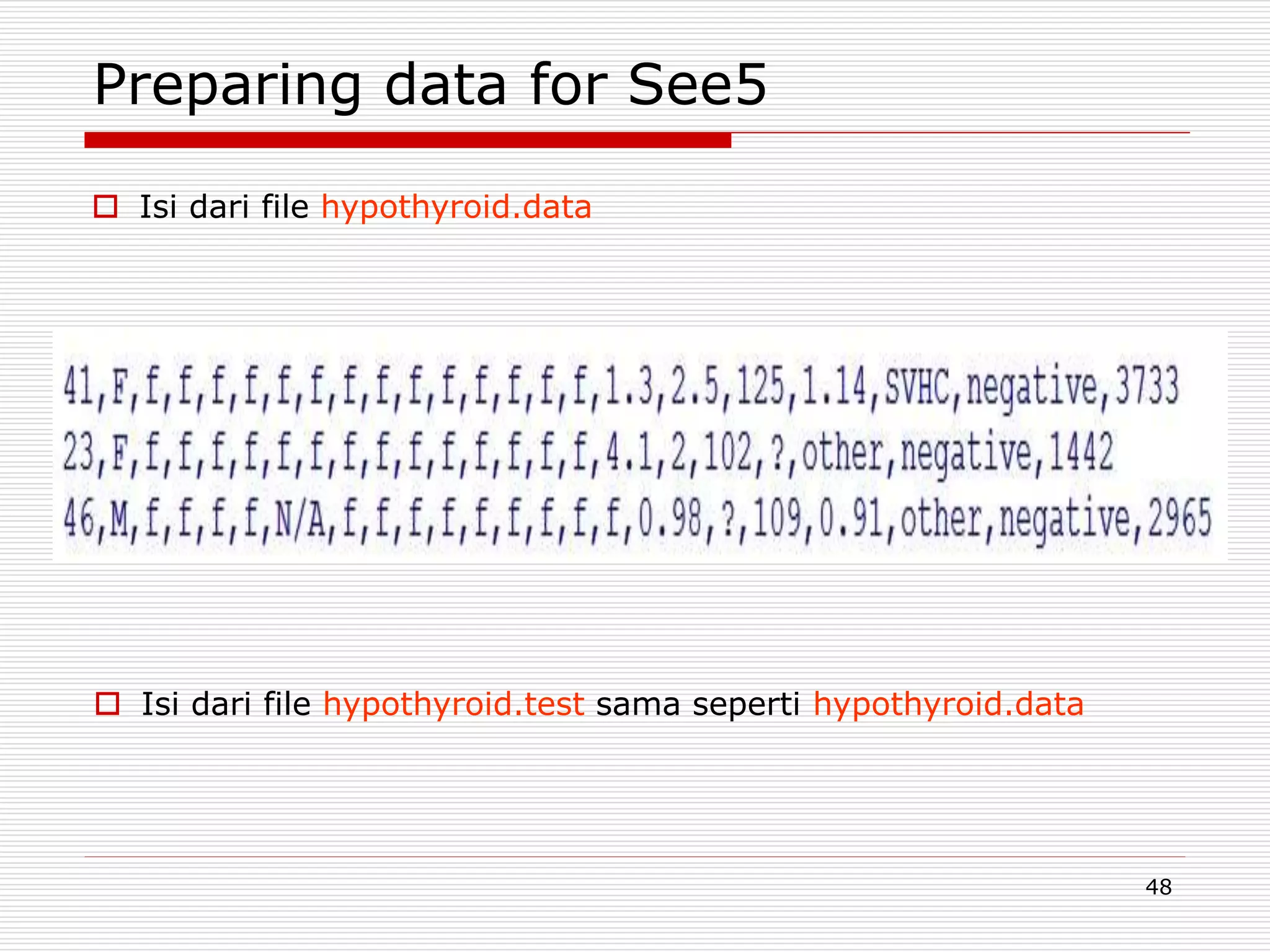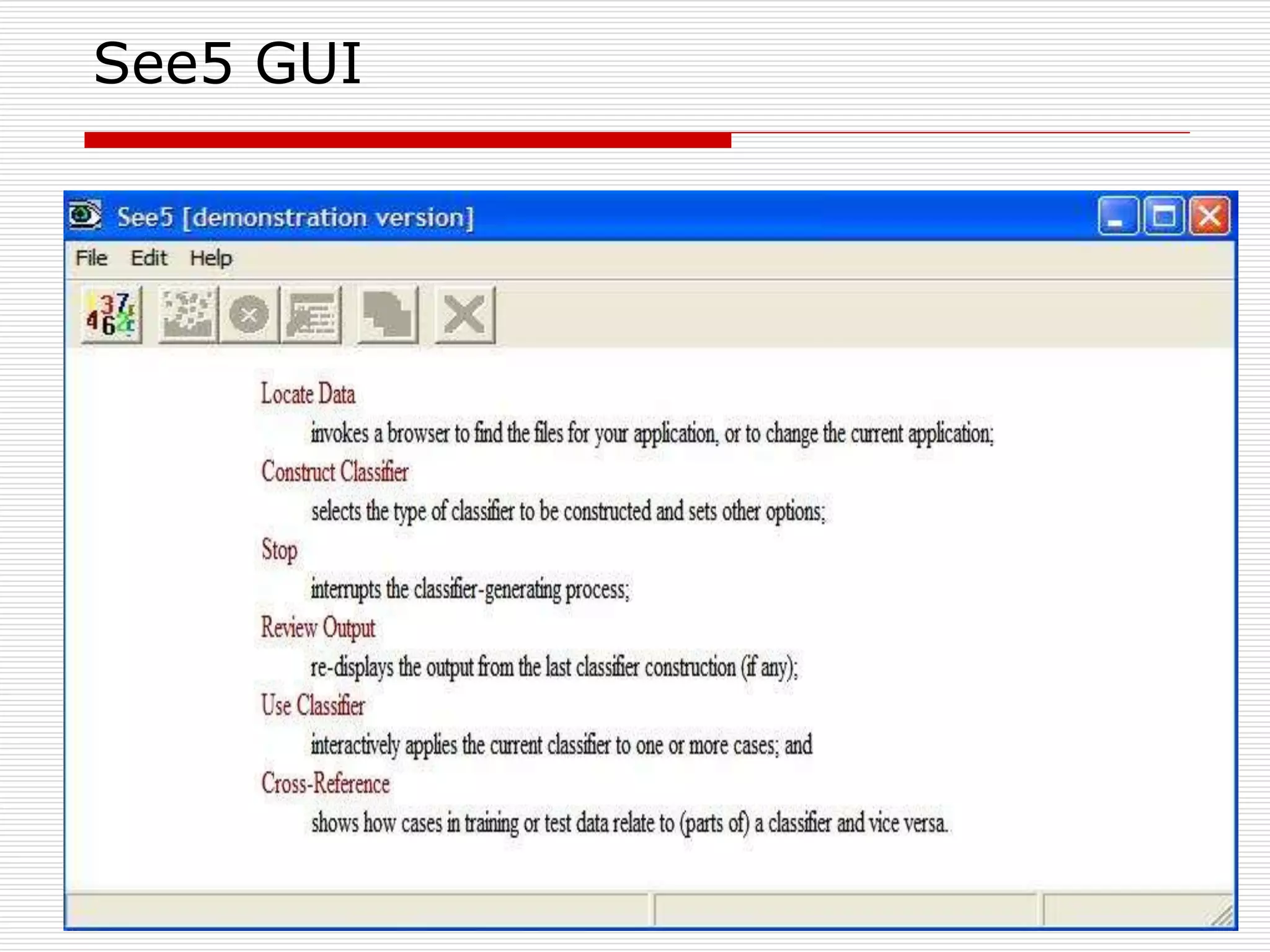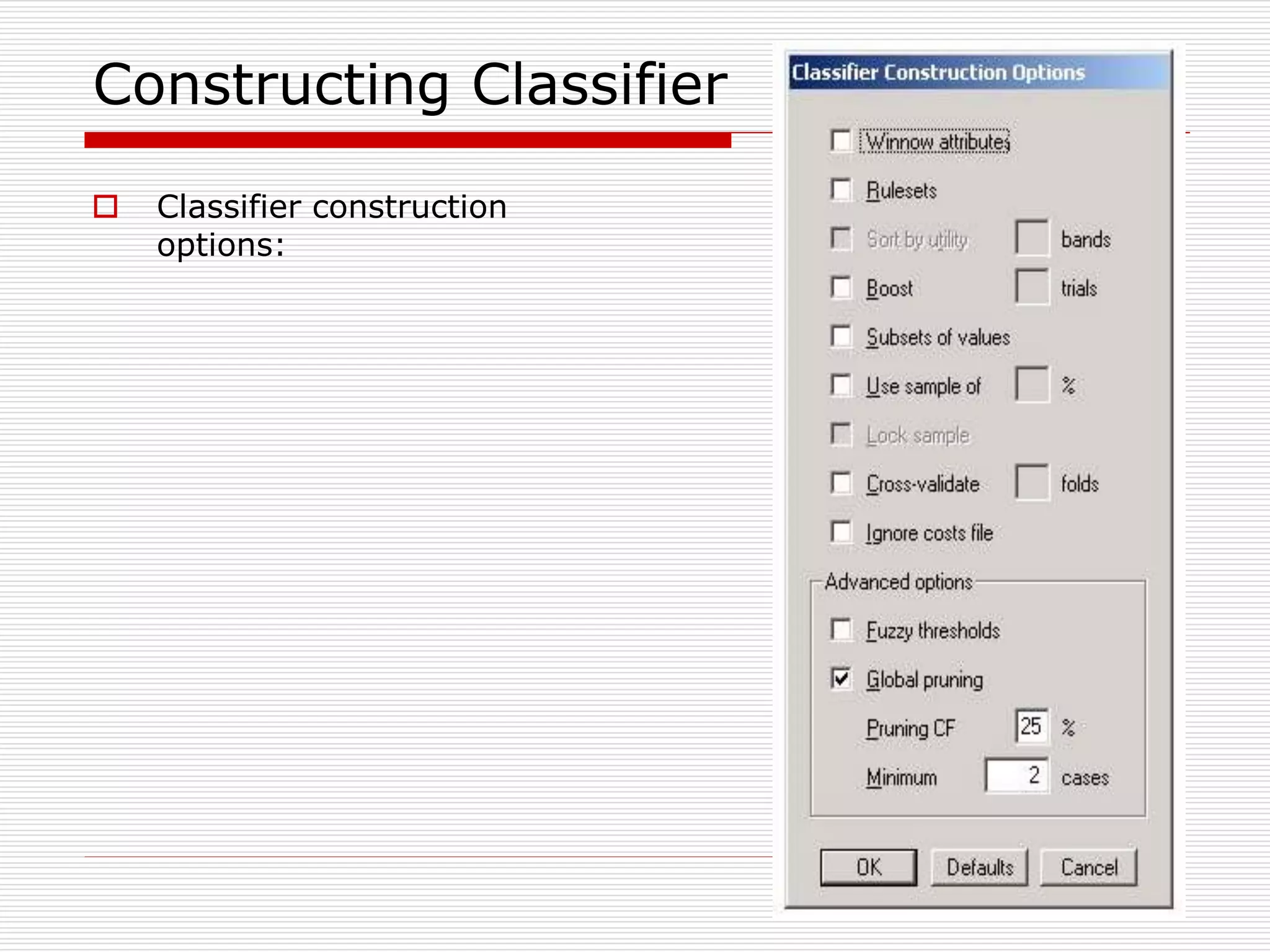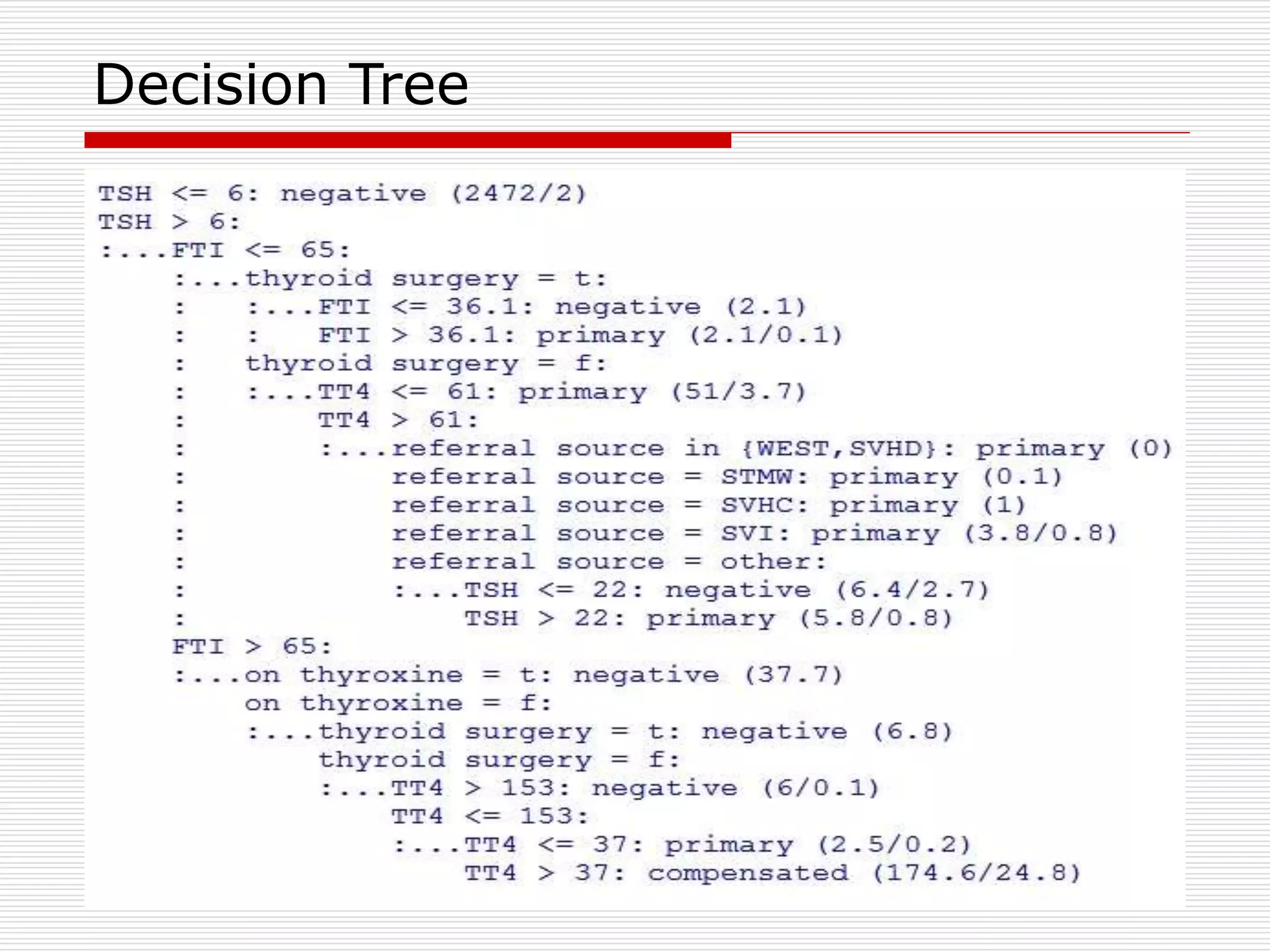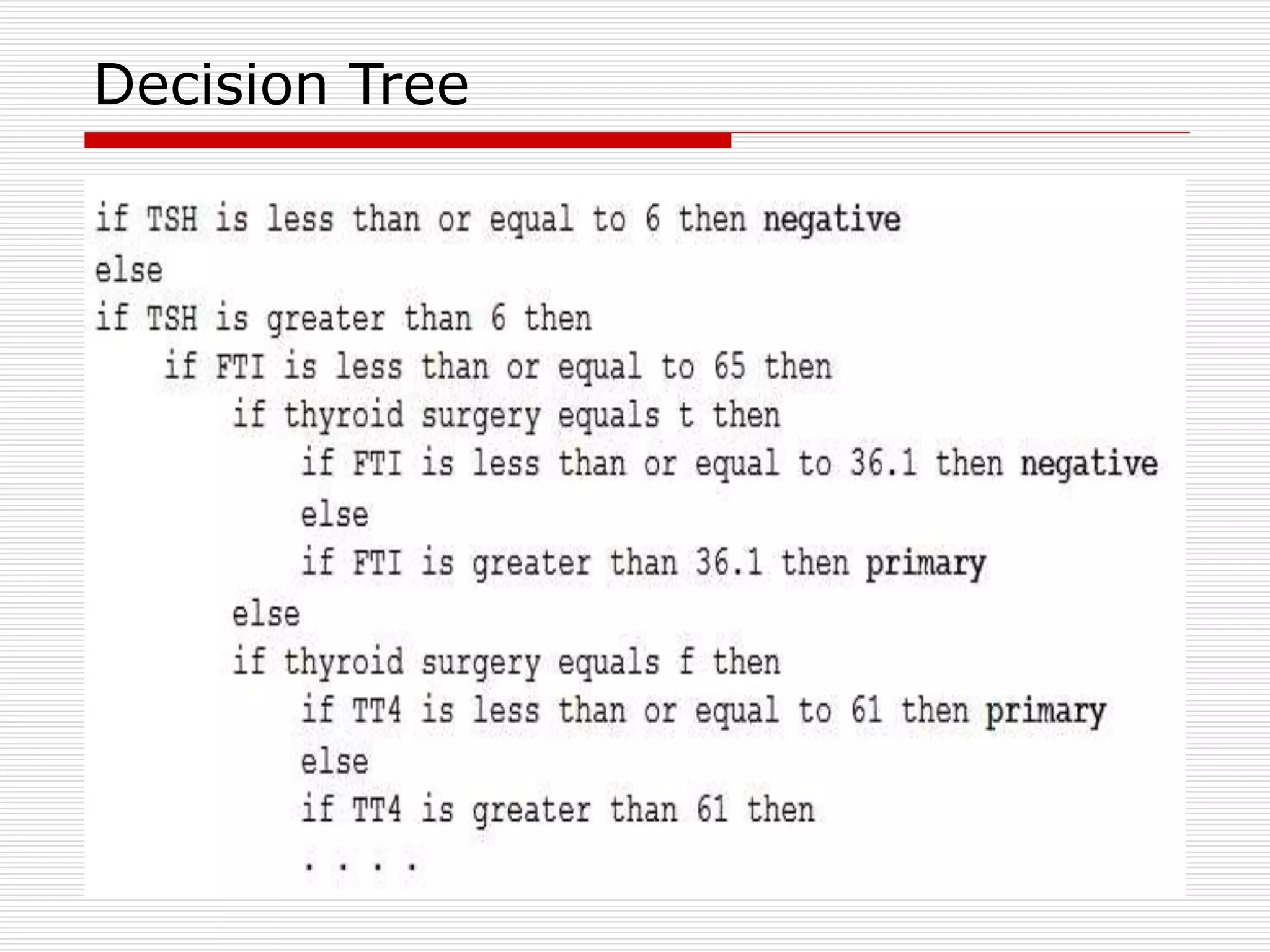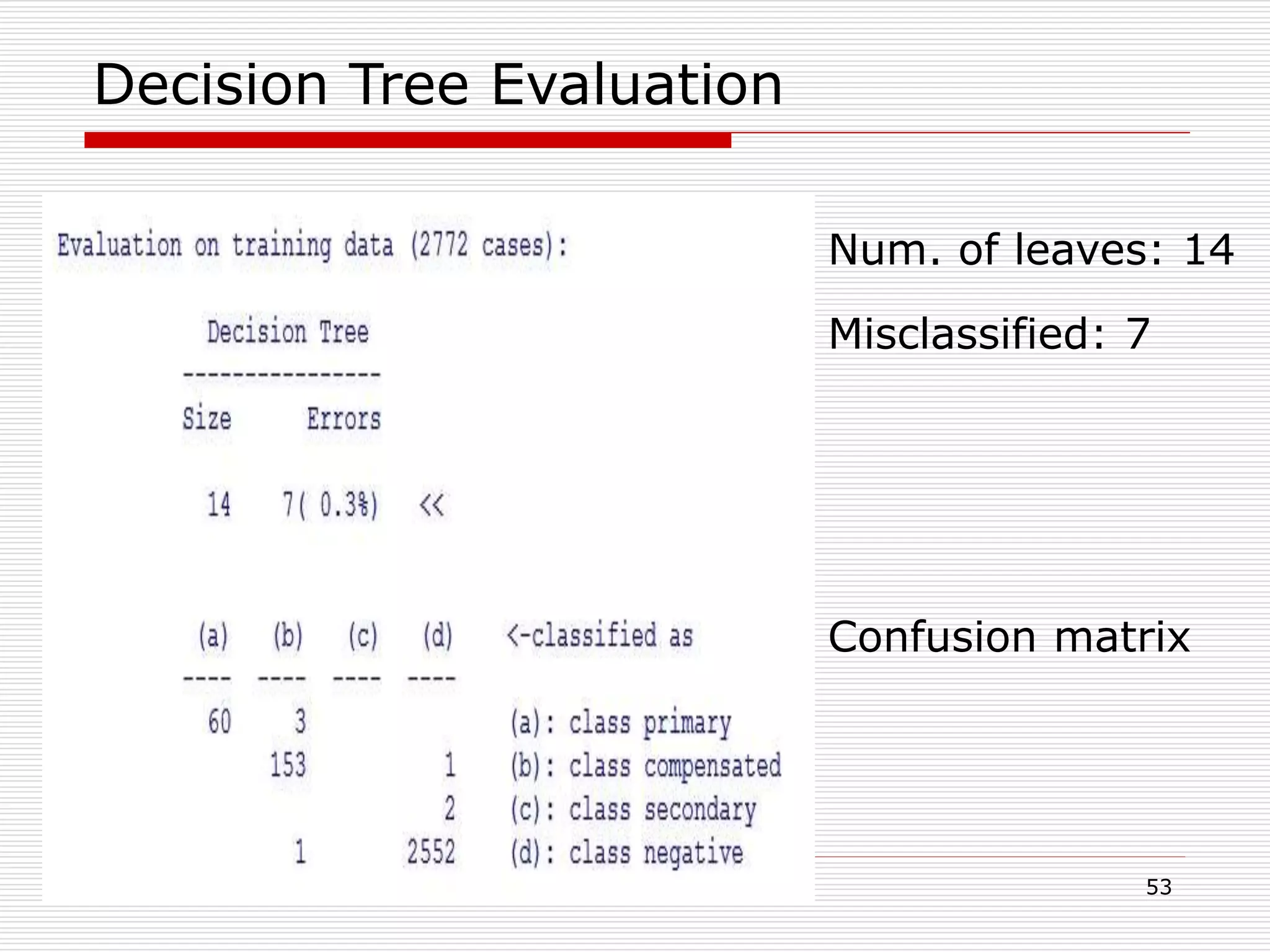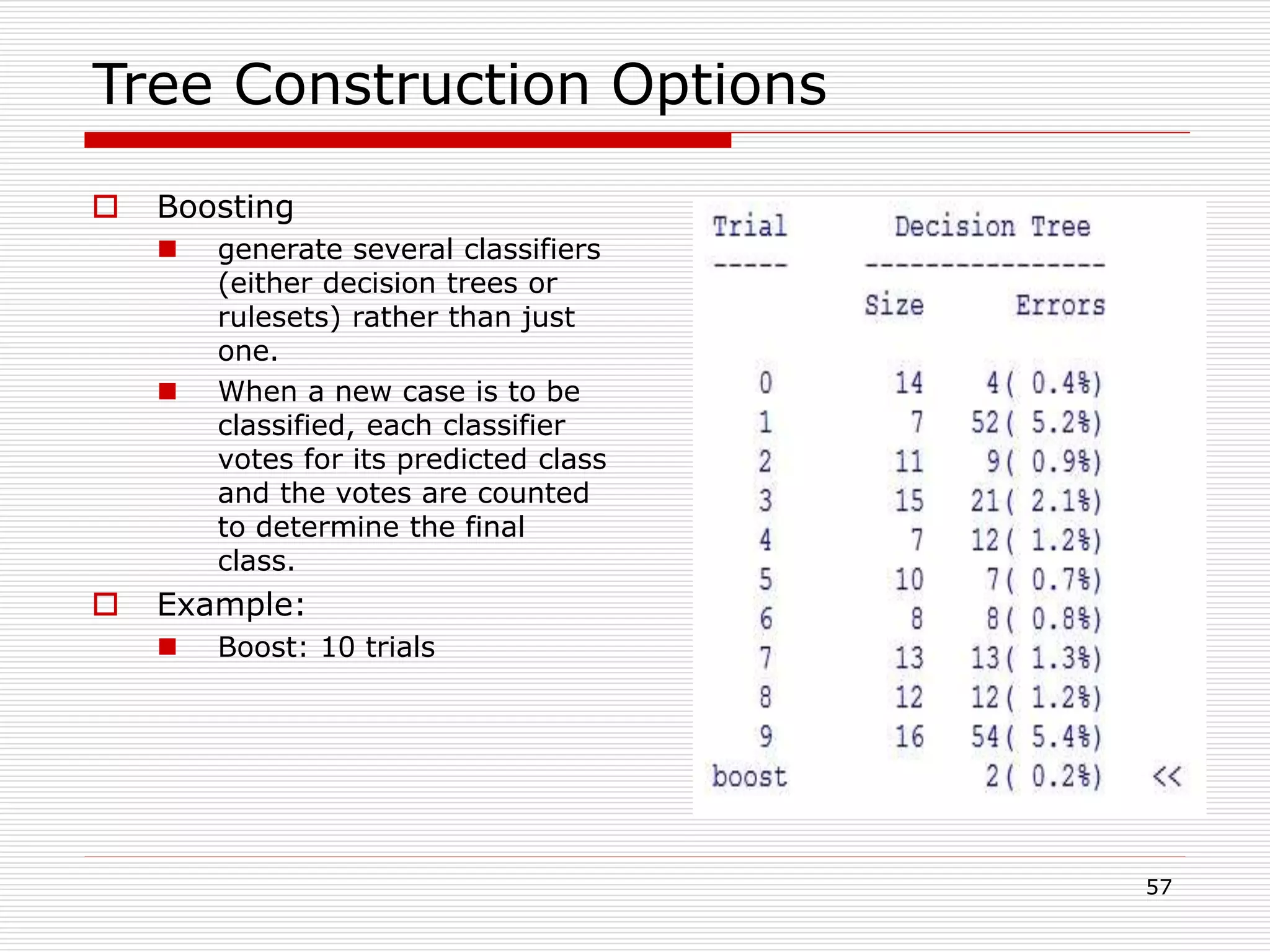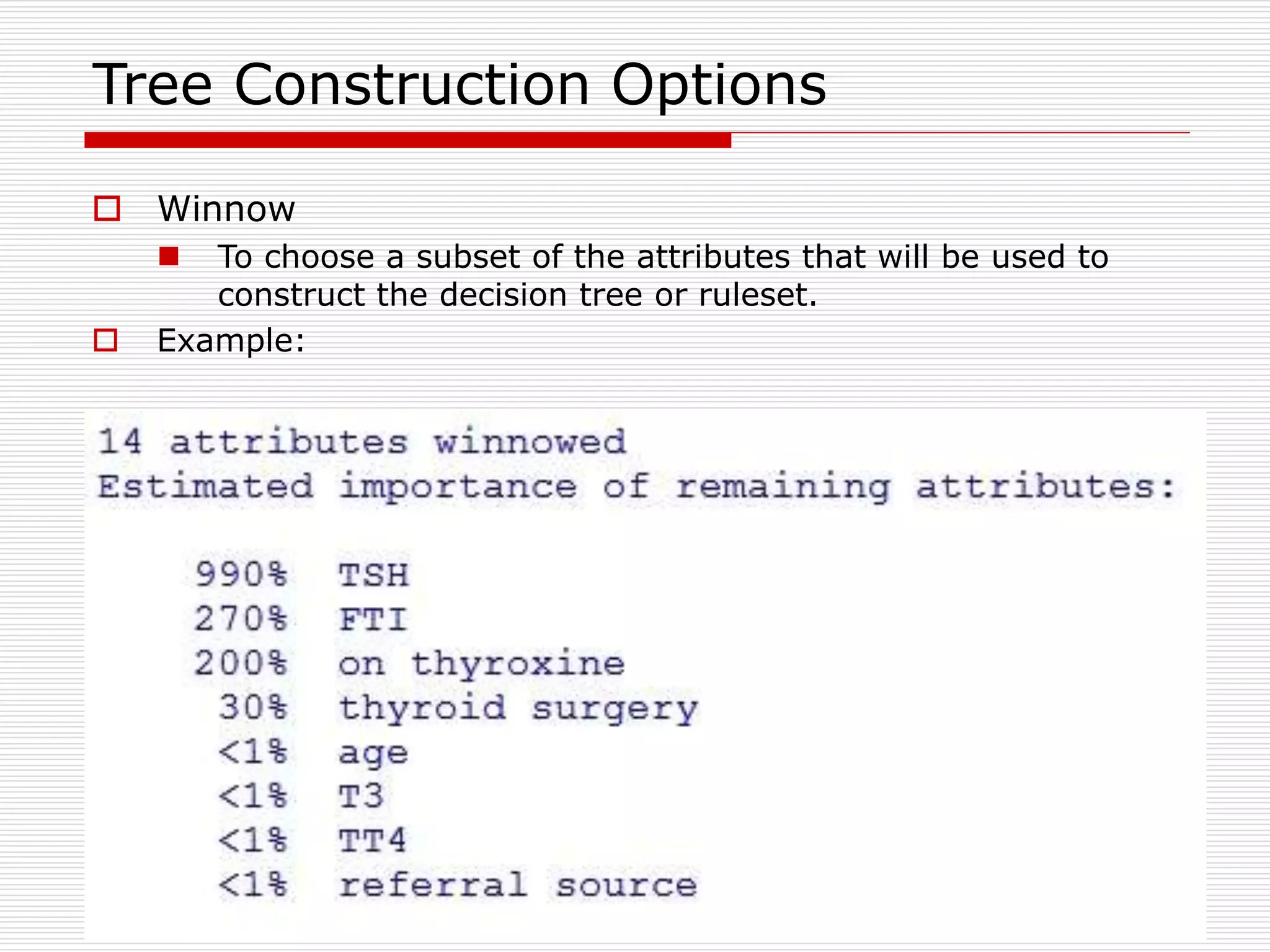Classification is a supervised machine learning task where a model is trained on labeled data to predict the class labels of new unlabeled data. The given document discusses classification and decision tree induction for classification. It defines classification, provides examples of classification tasks, and describes how decision trees are constructed through a greedy top-down induction approach that aims to split the training data into homogeneous subsets based on measures of impurity like Gini index or information gain. The goal is to build an accurate model that can classify new unlabeled data.

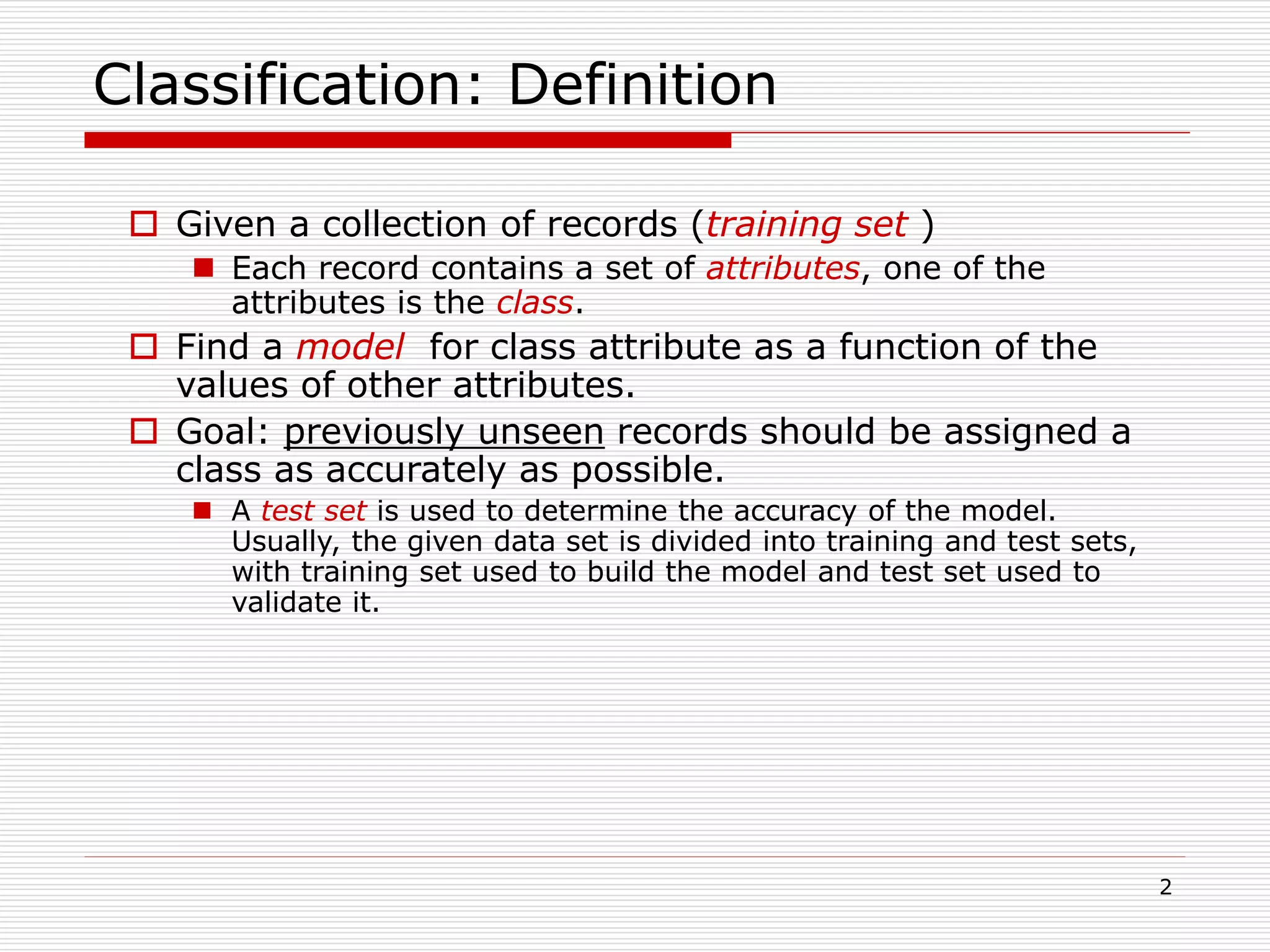

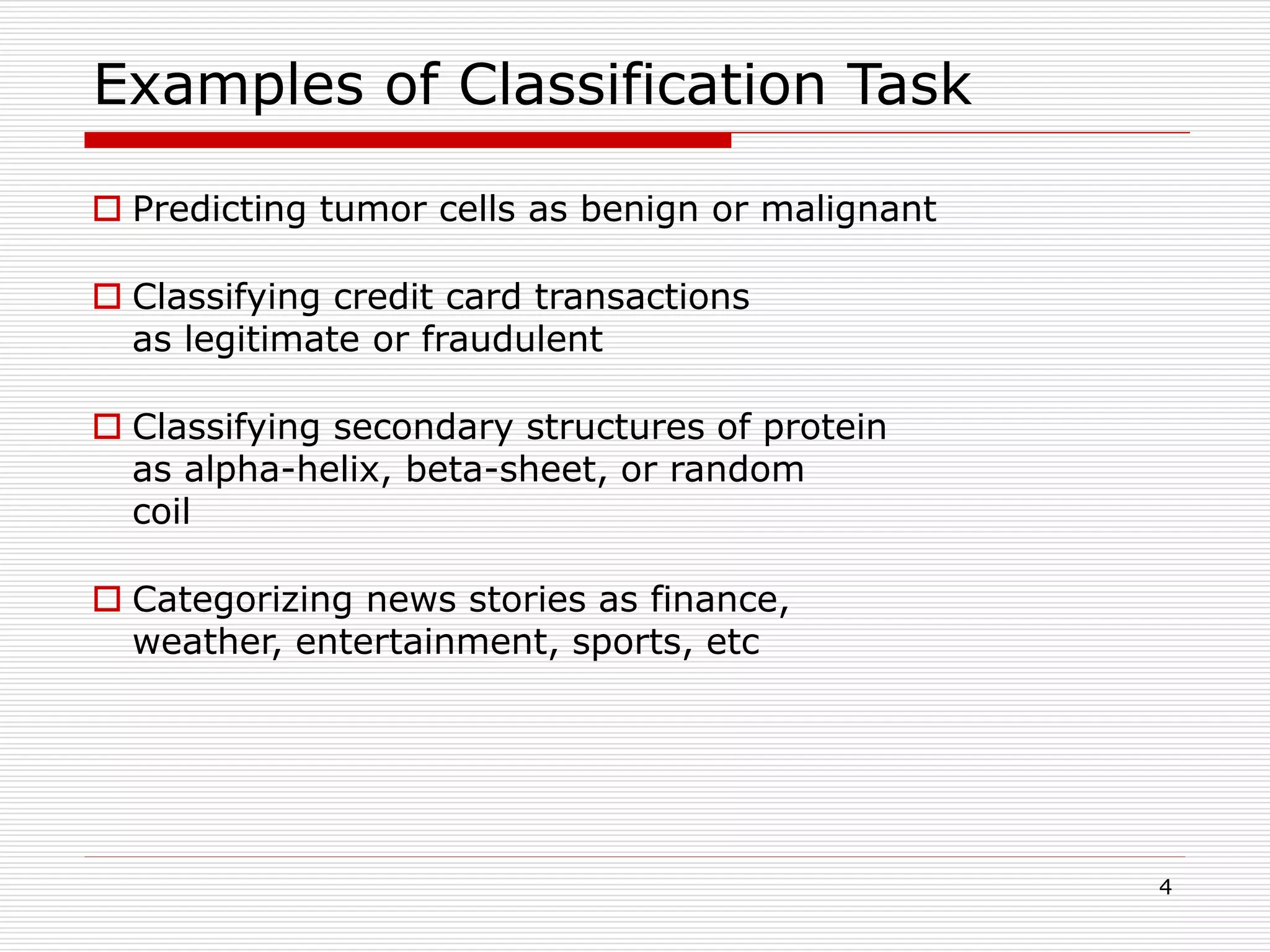
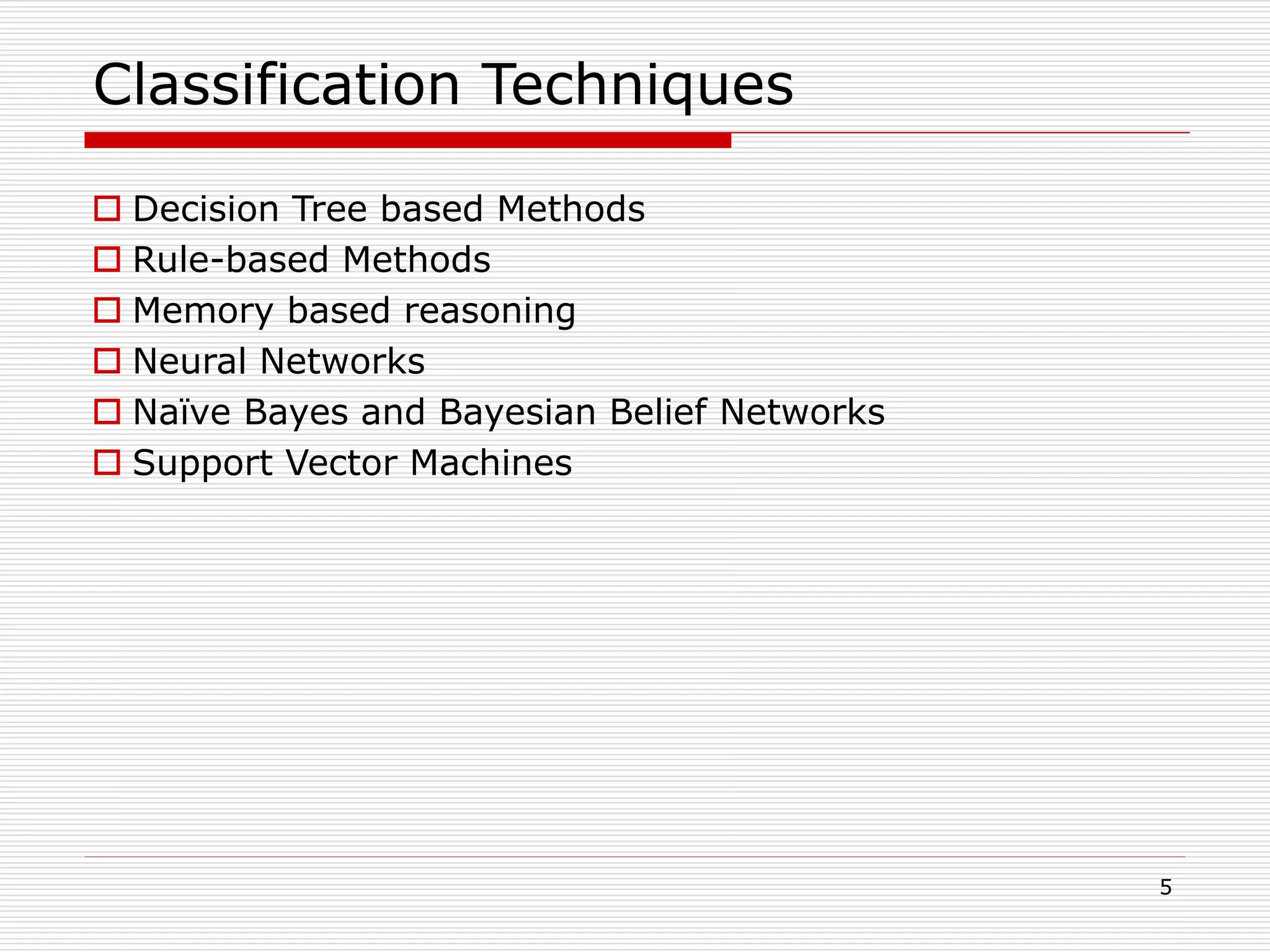
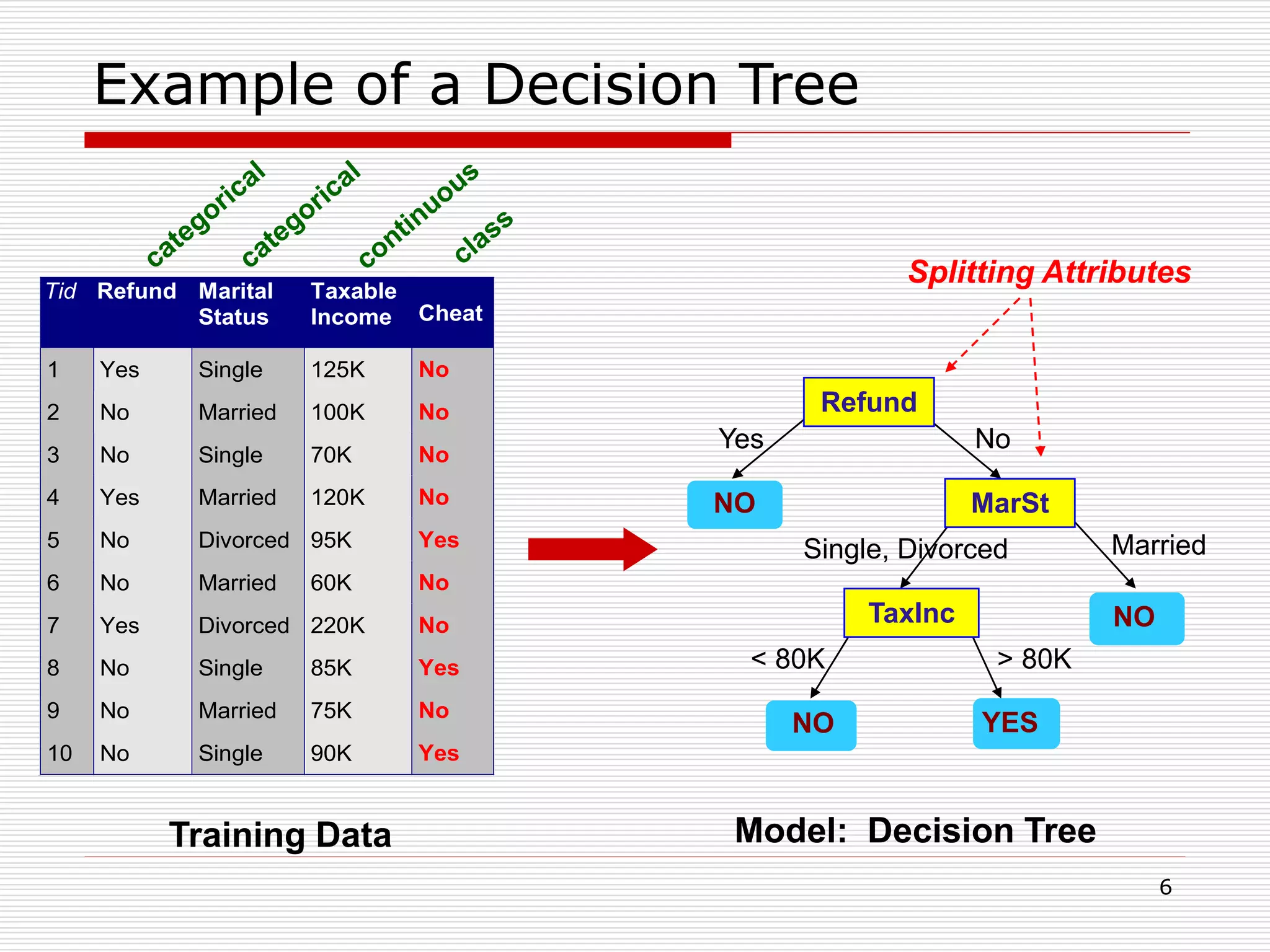
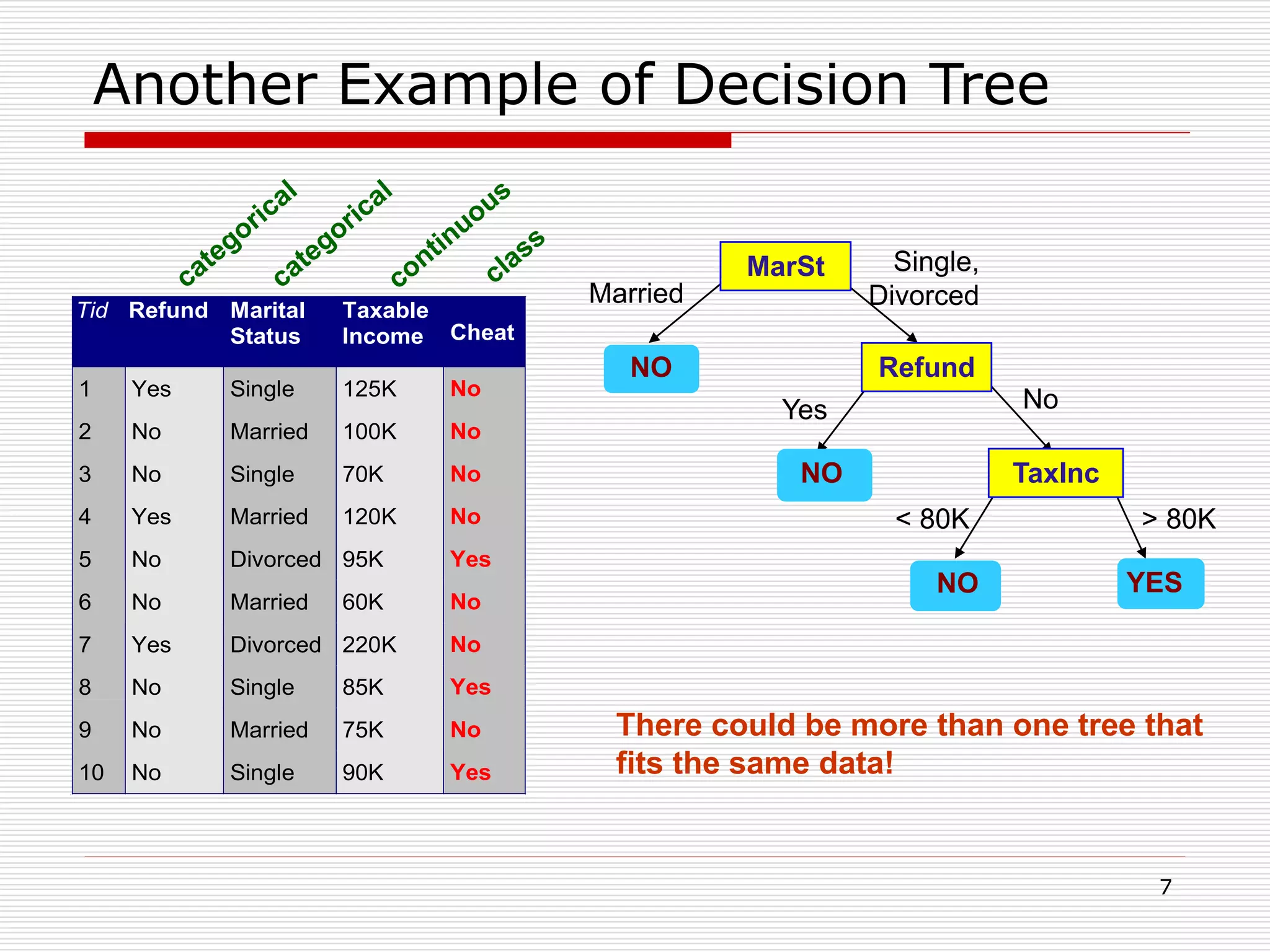
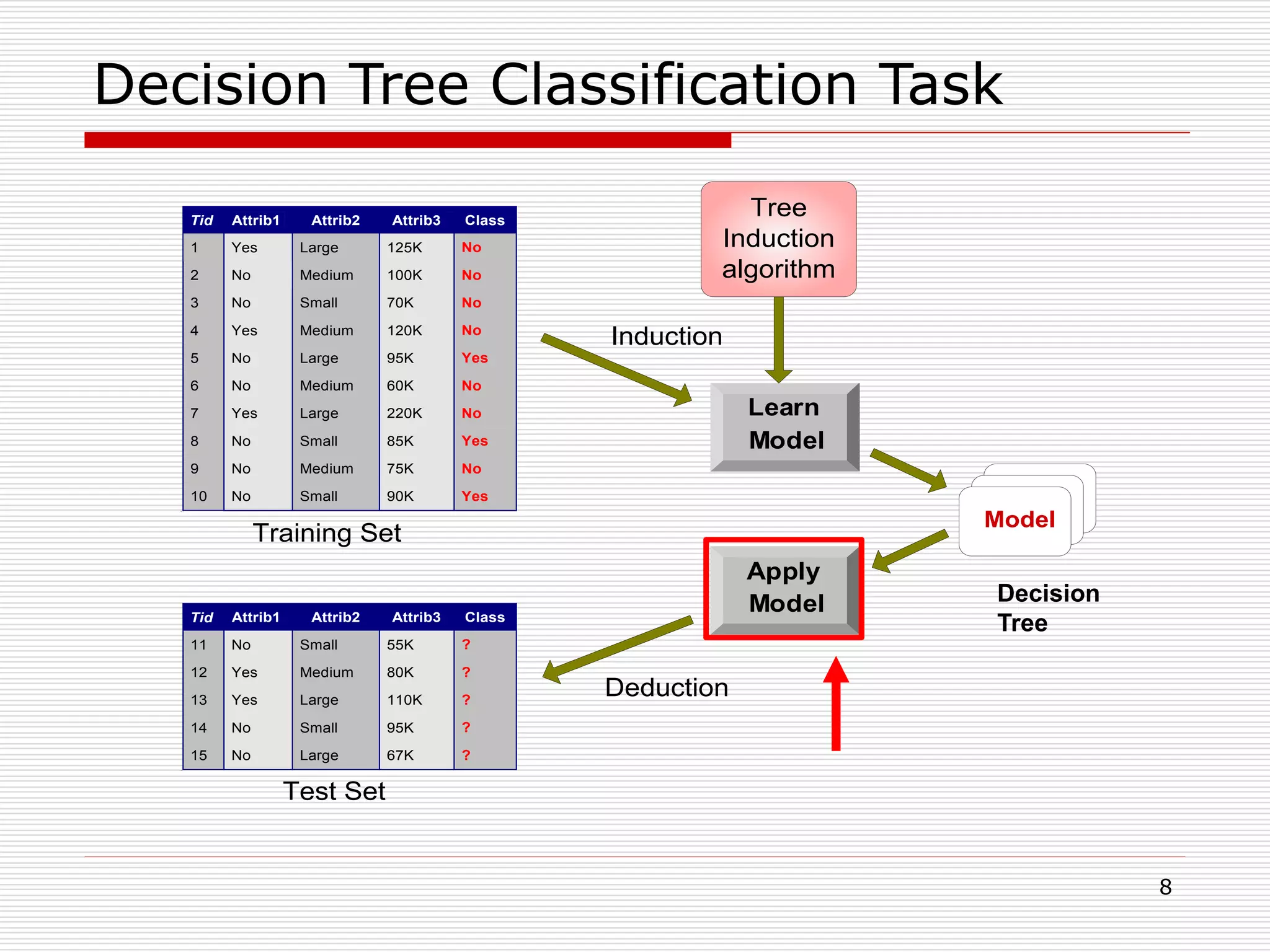
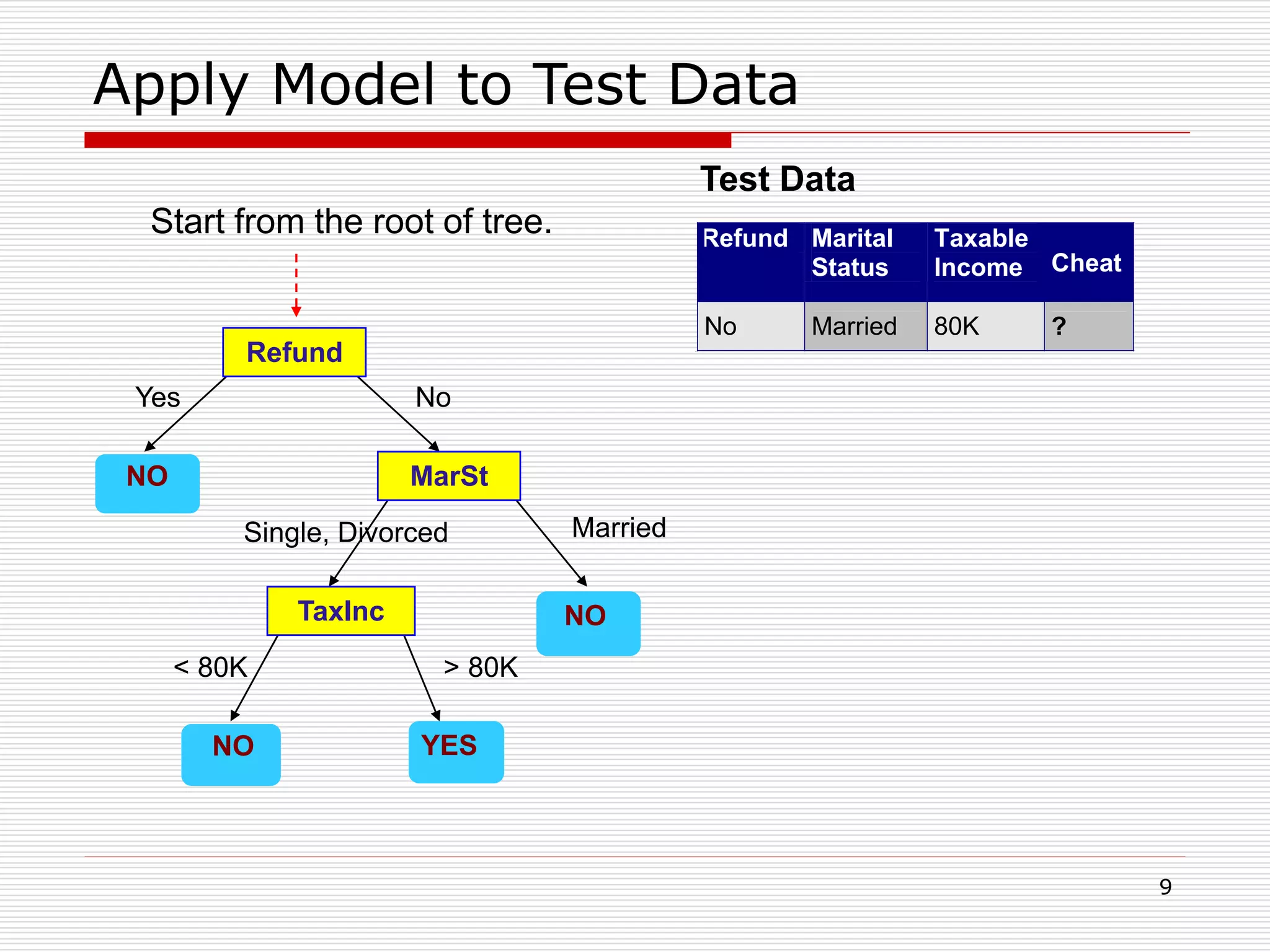

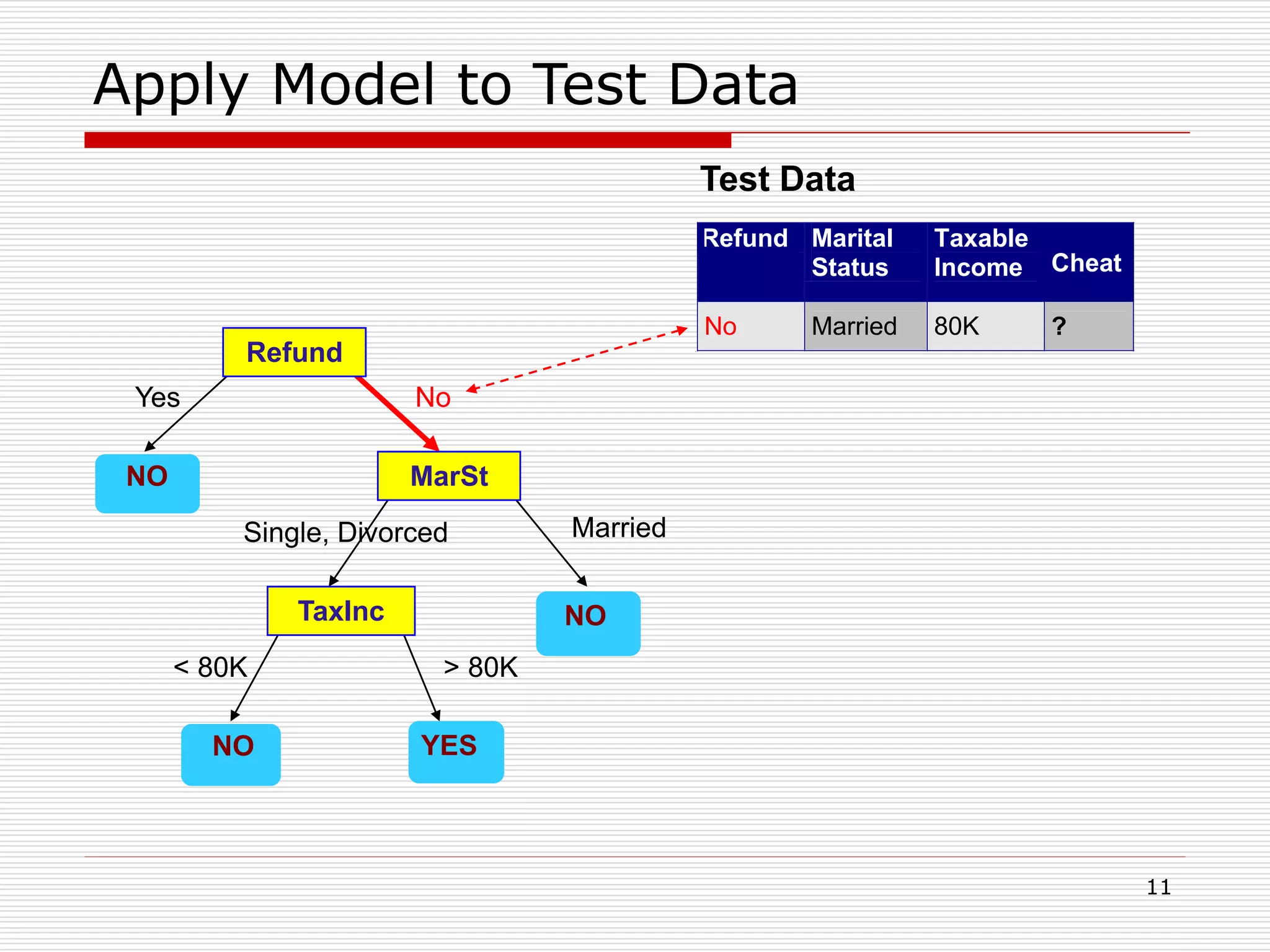
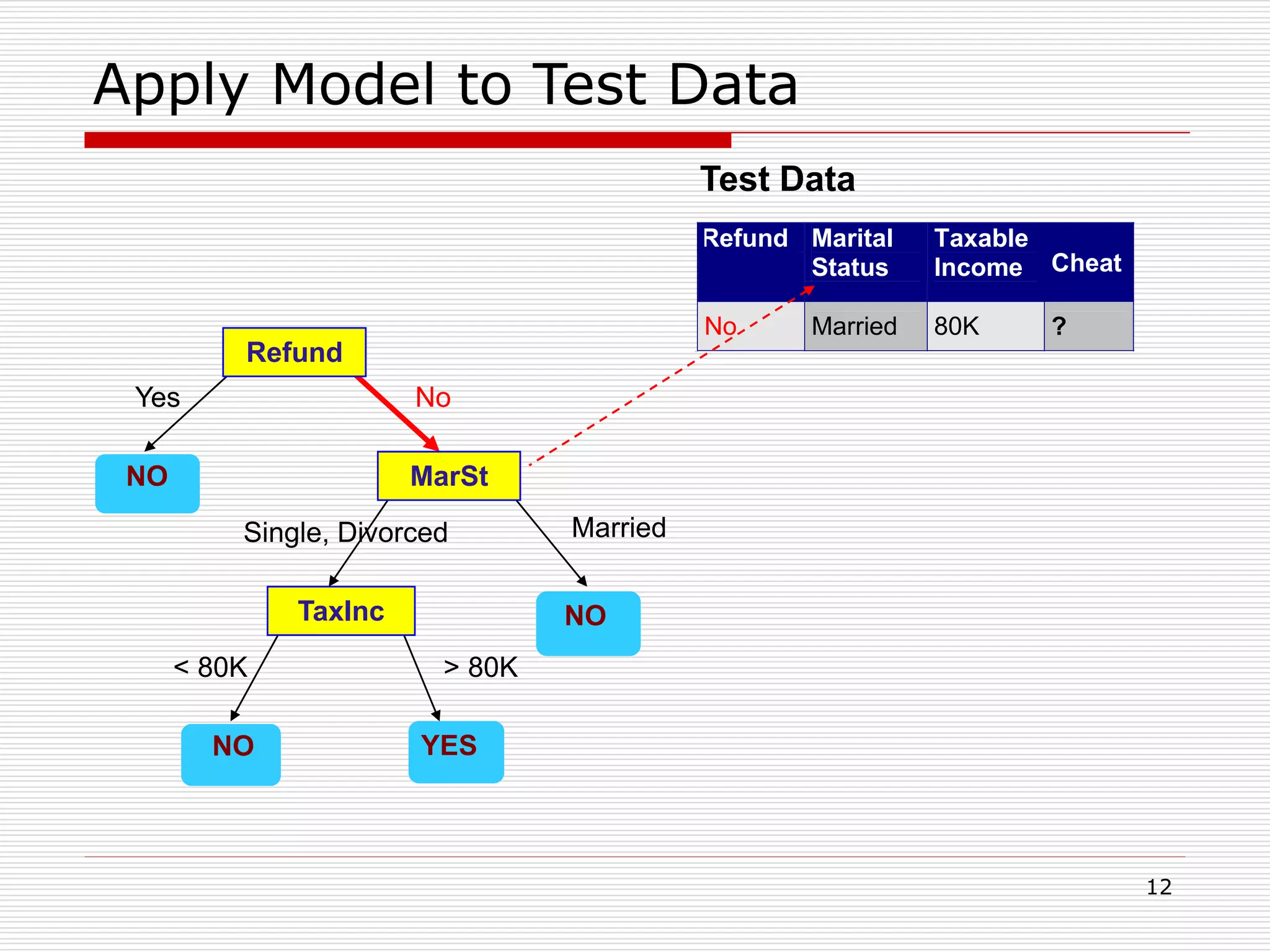
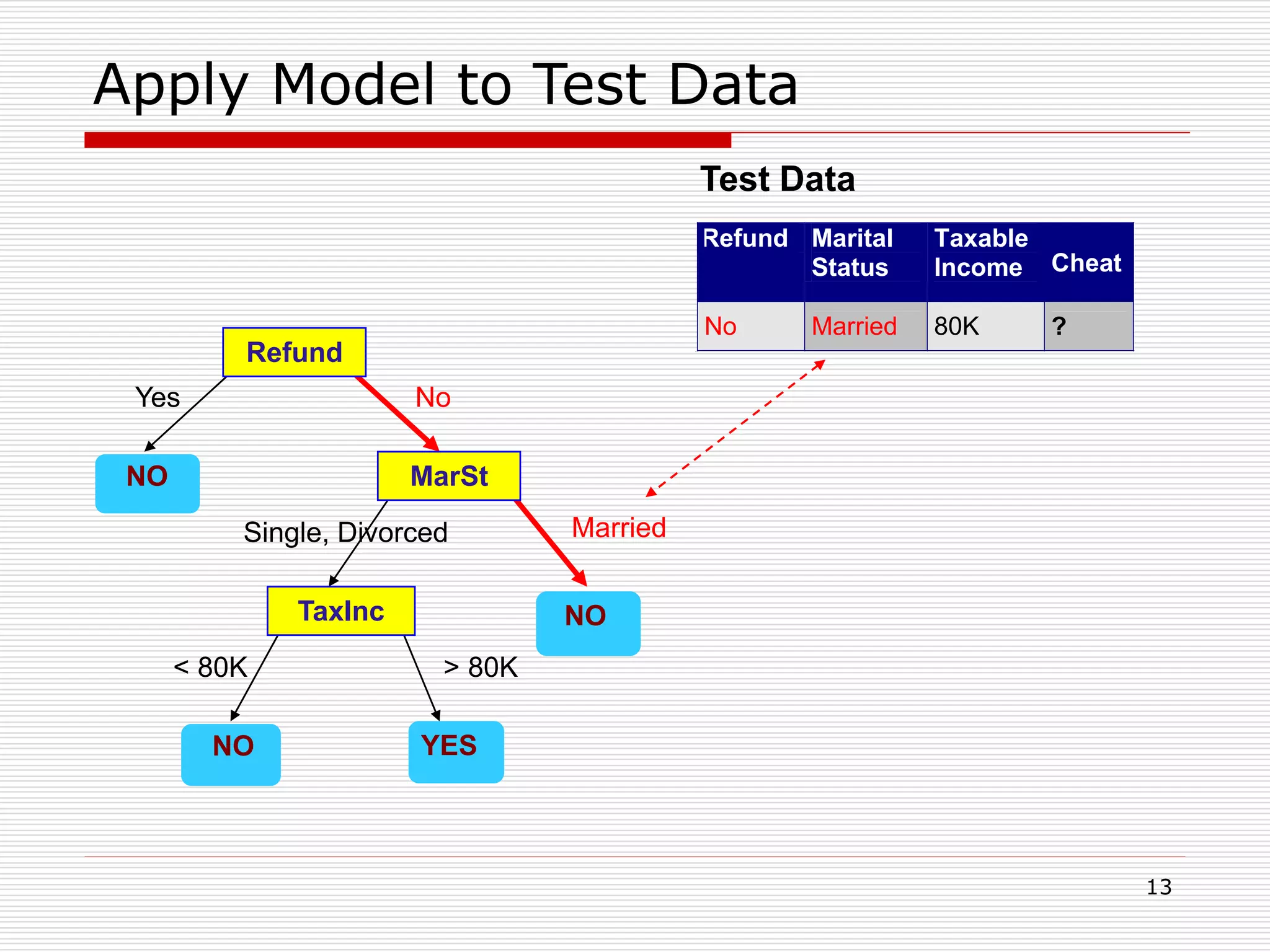

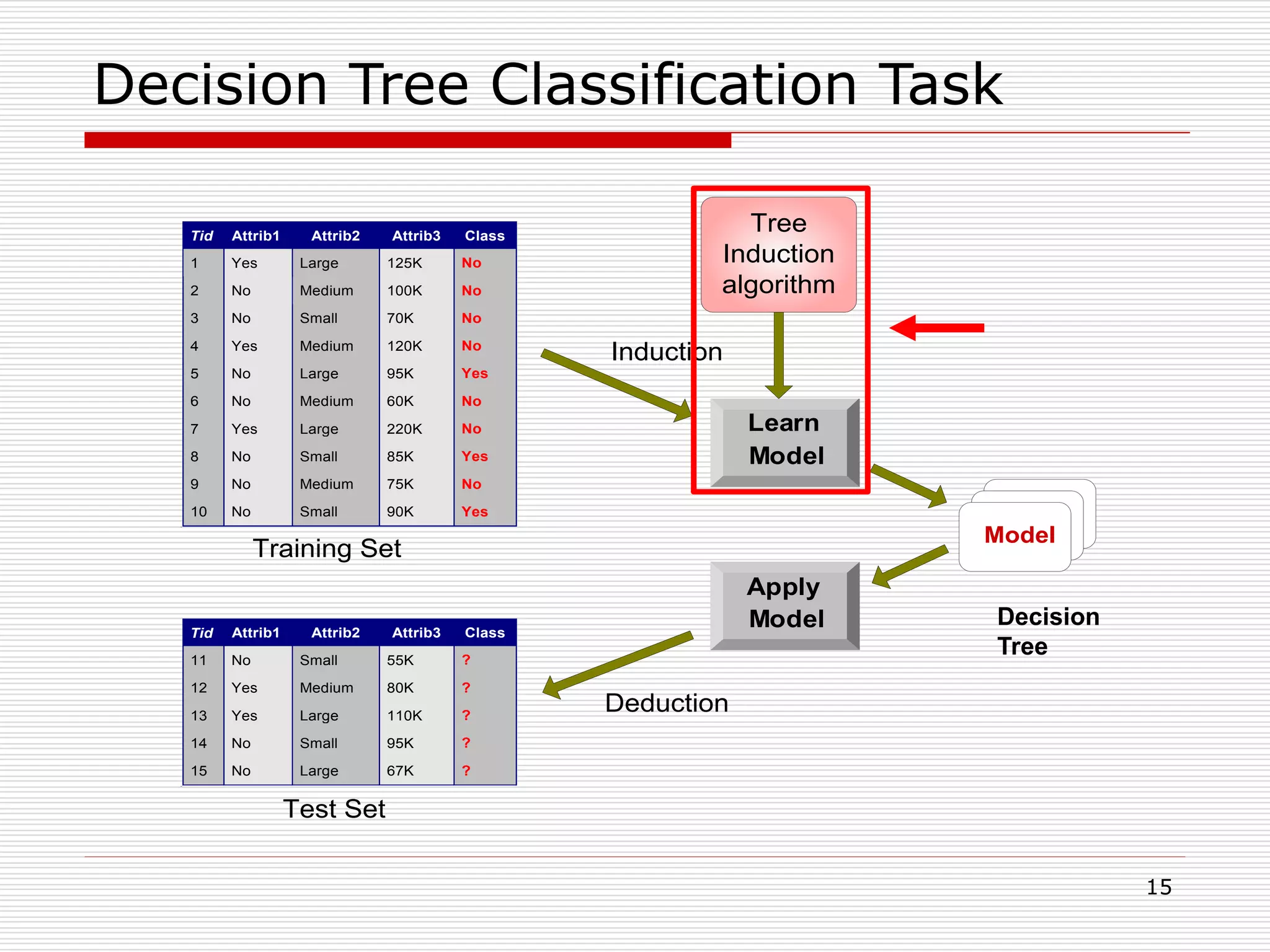
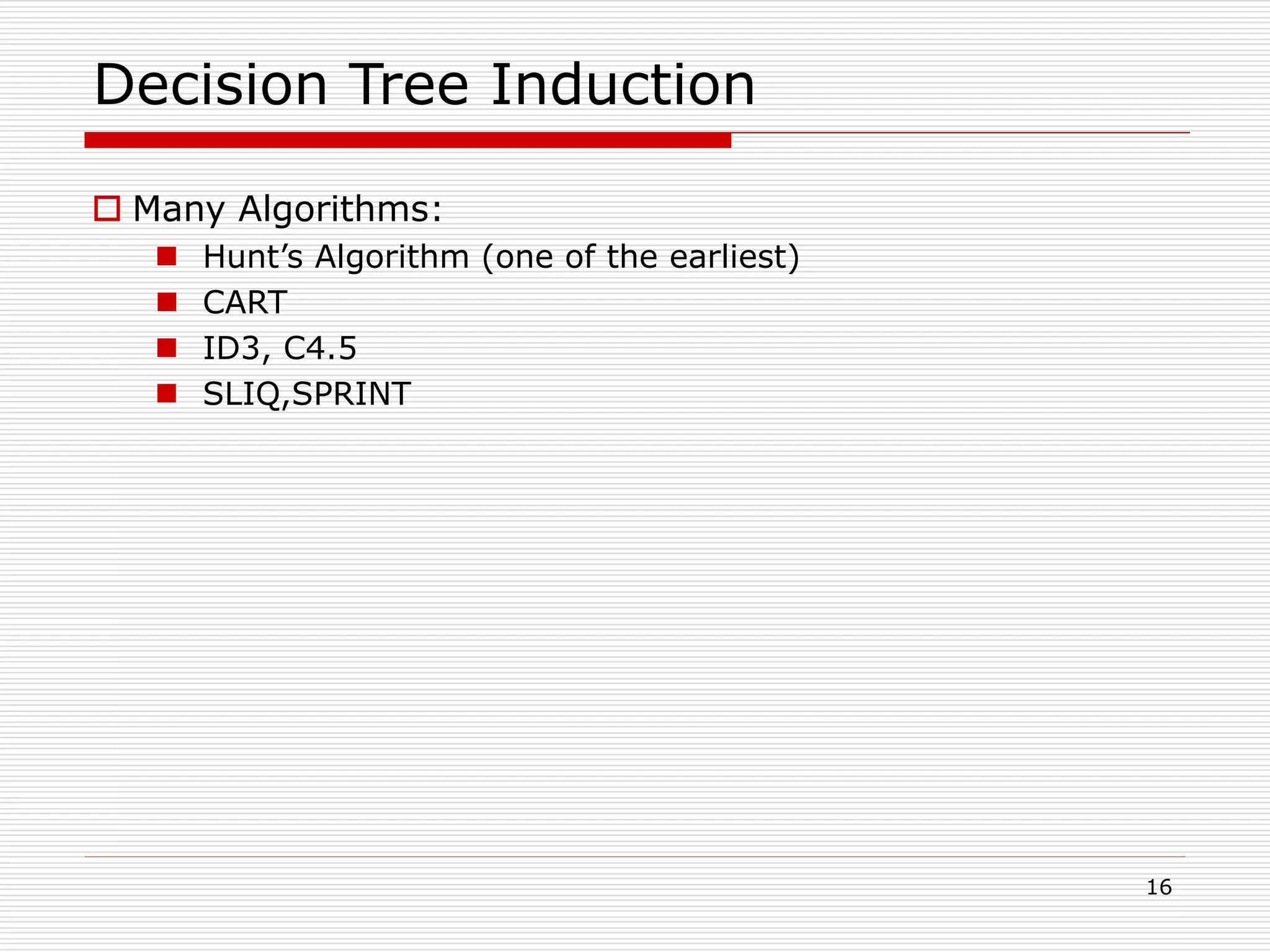

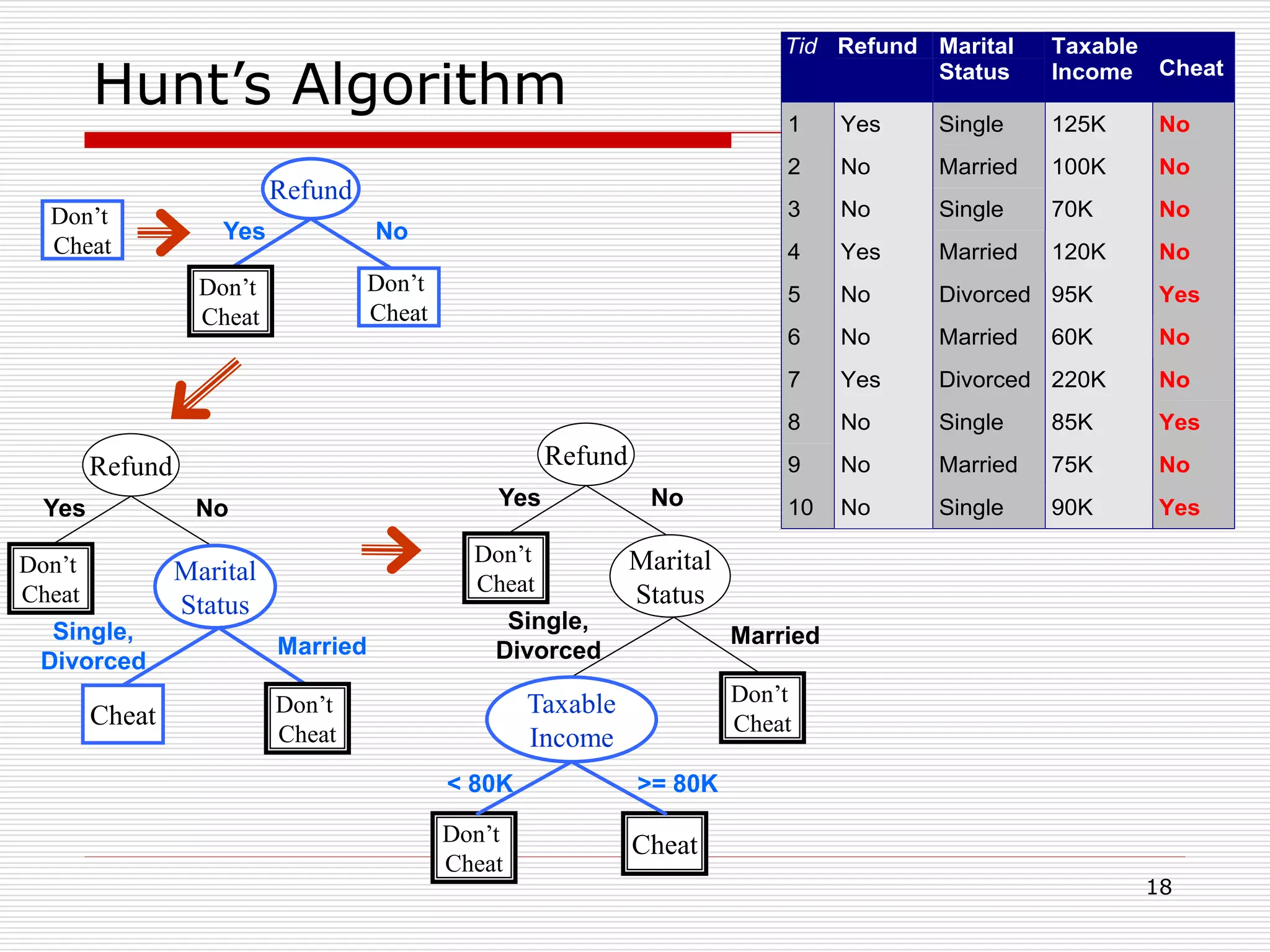
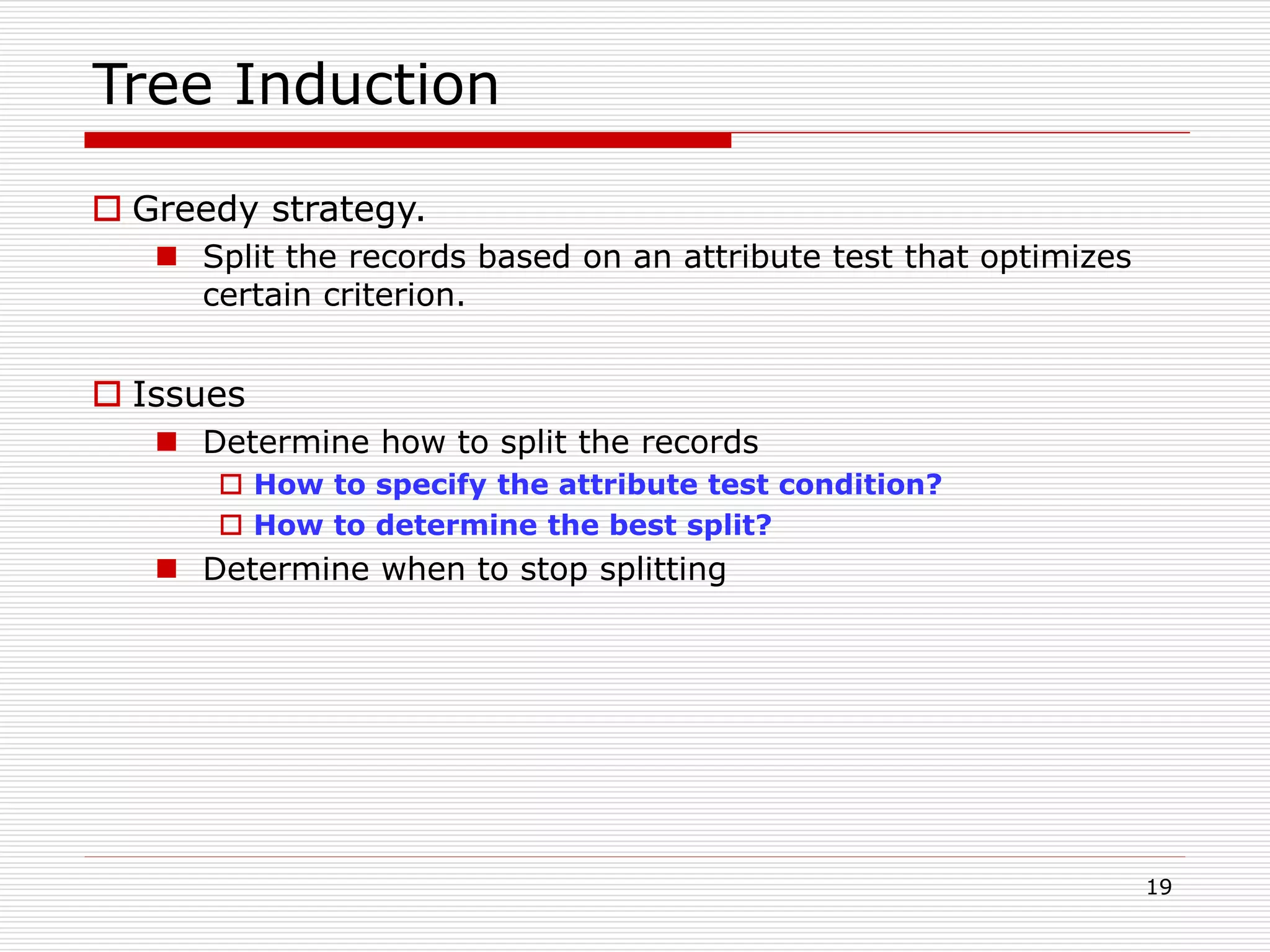
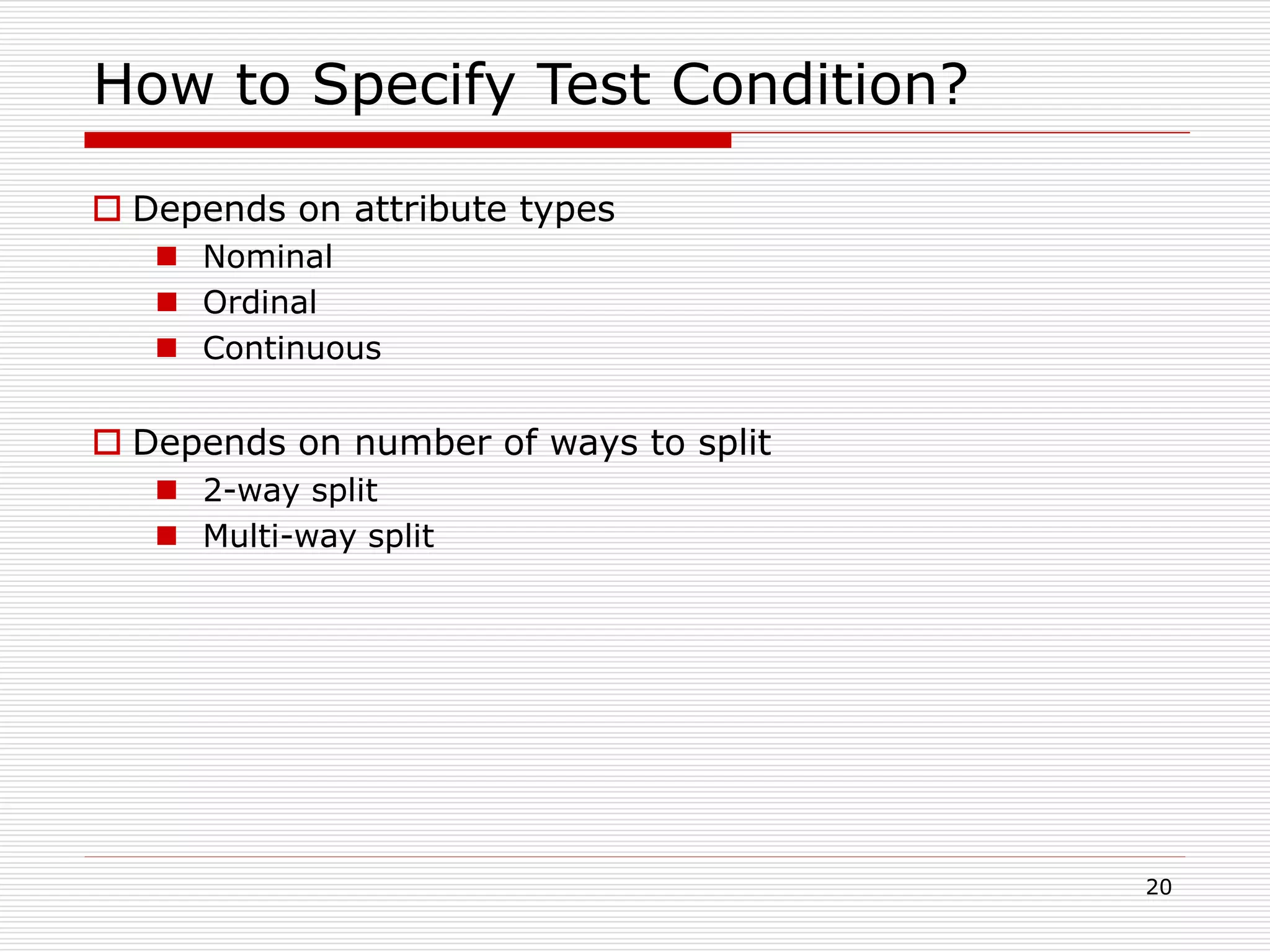
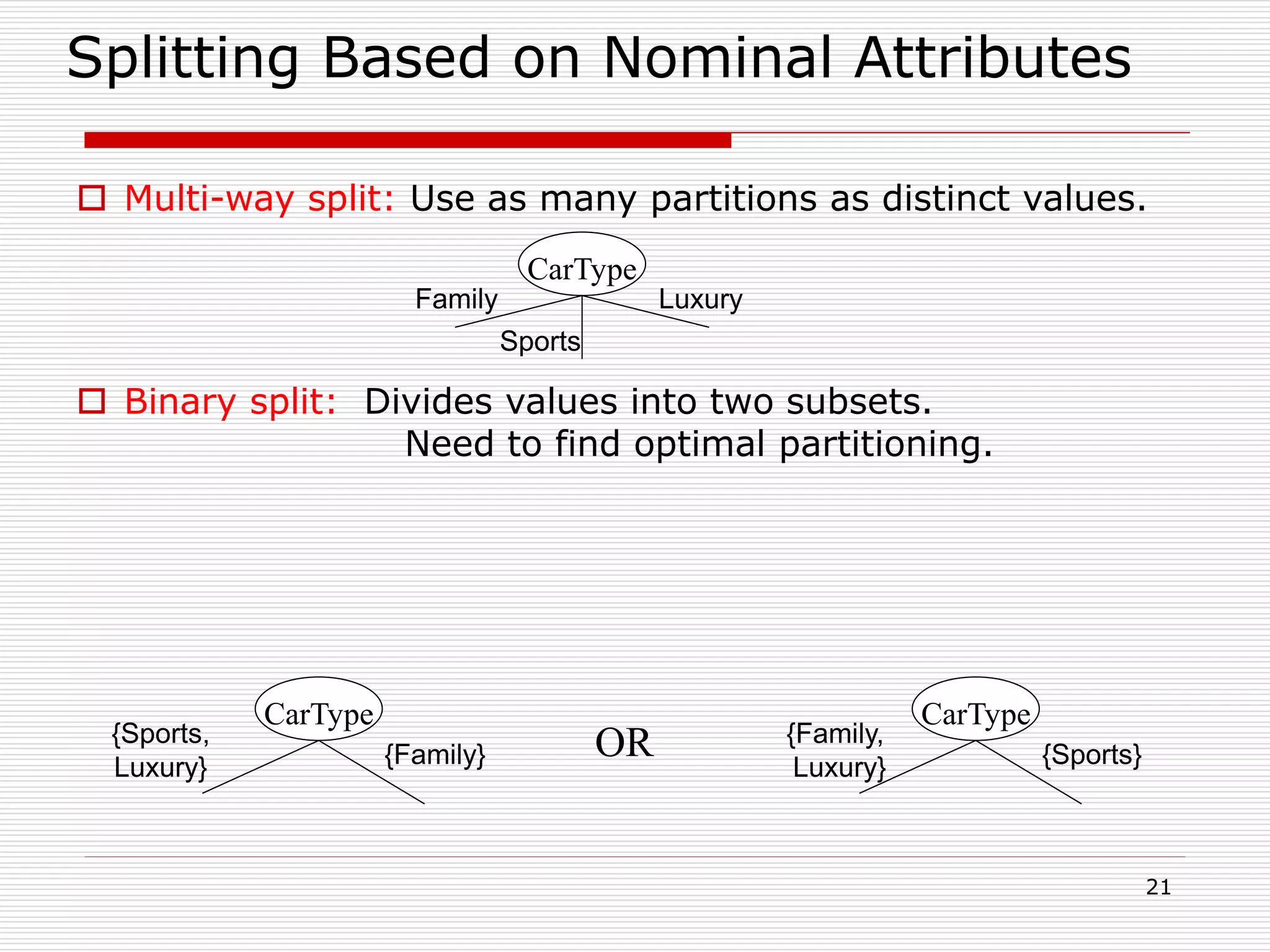
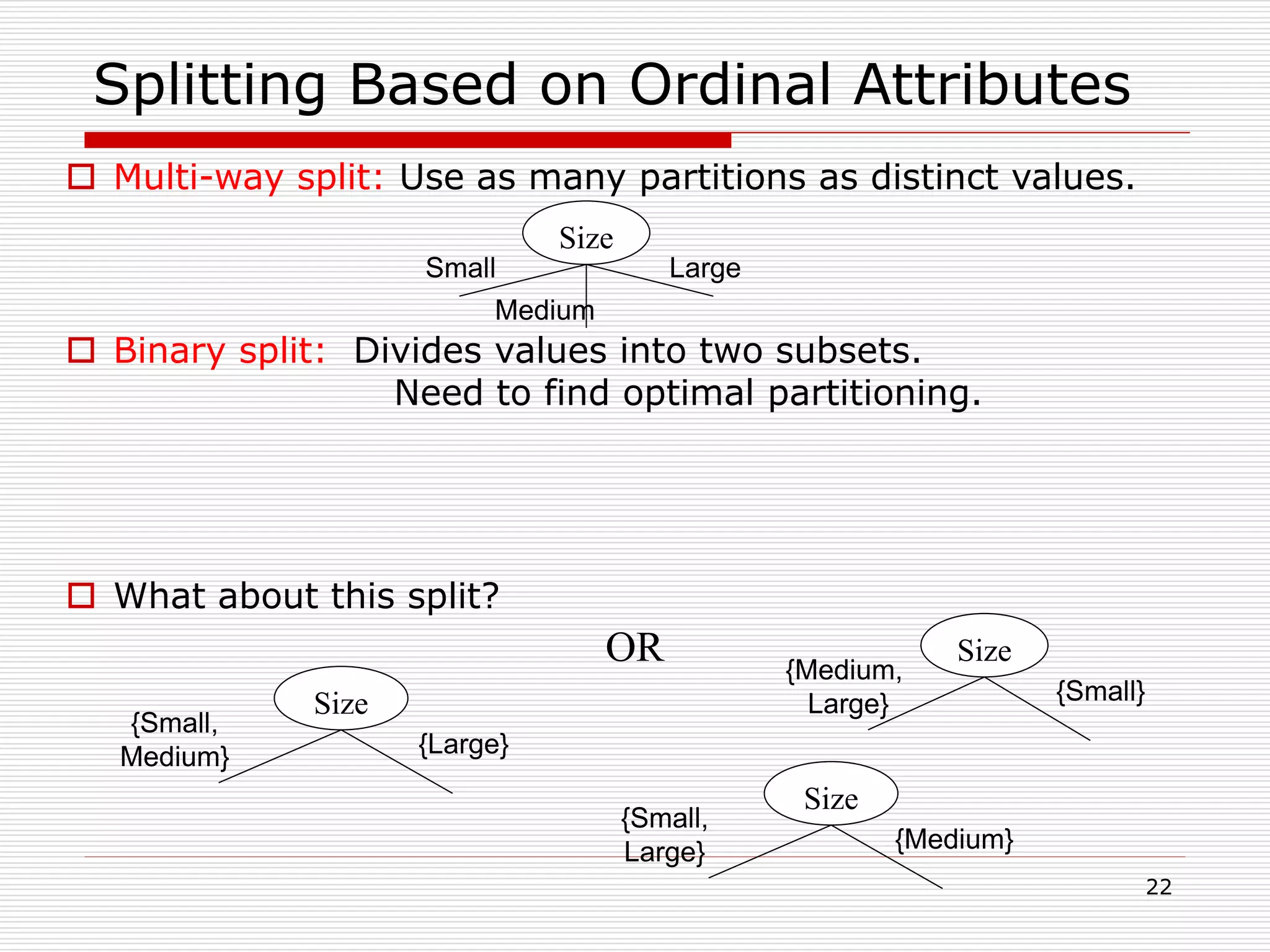
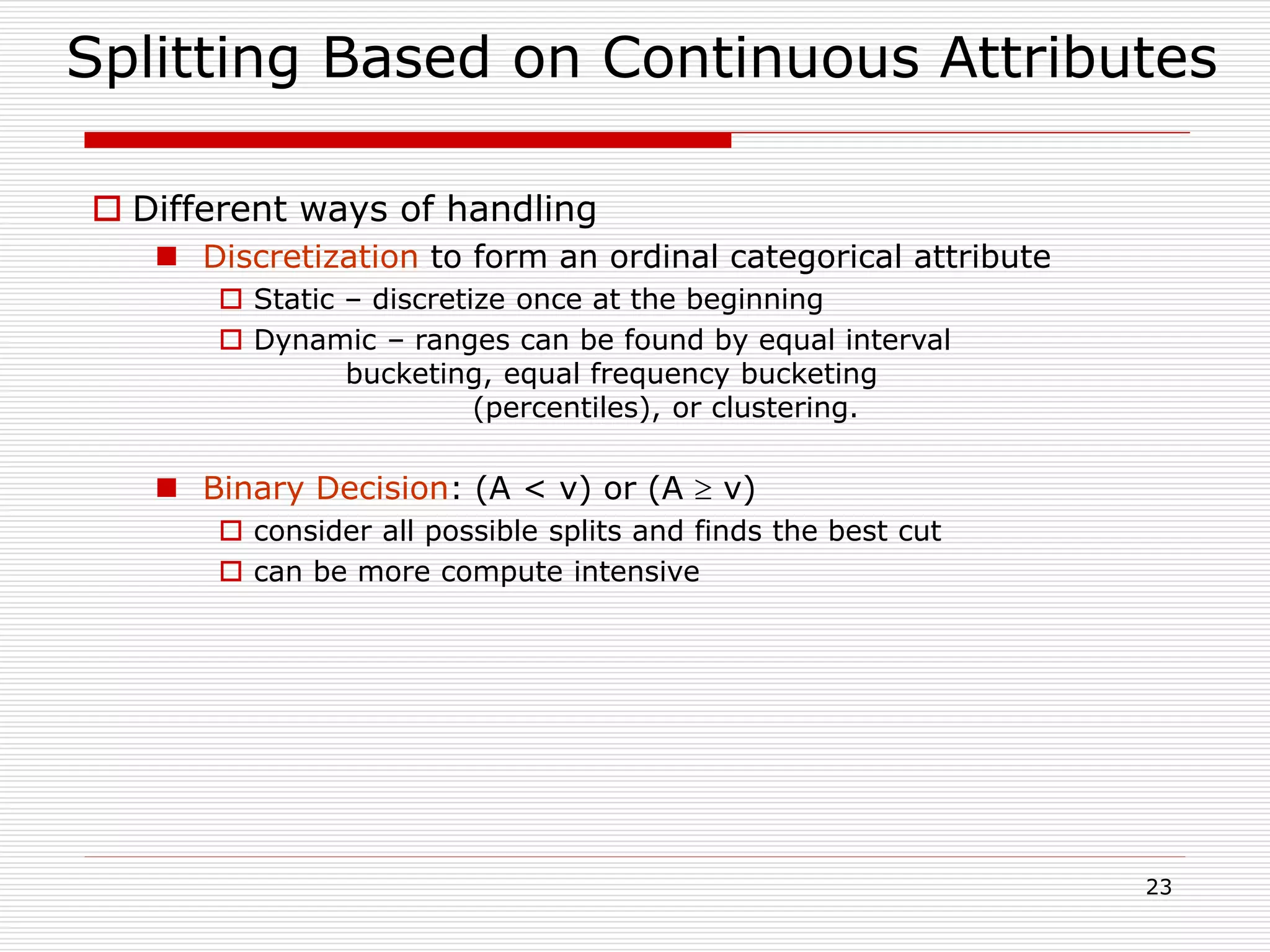
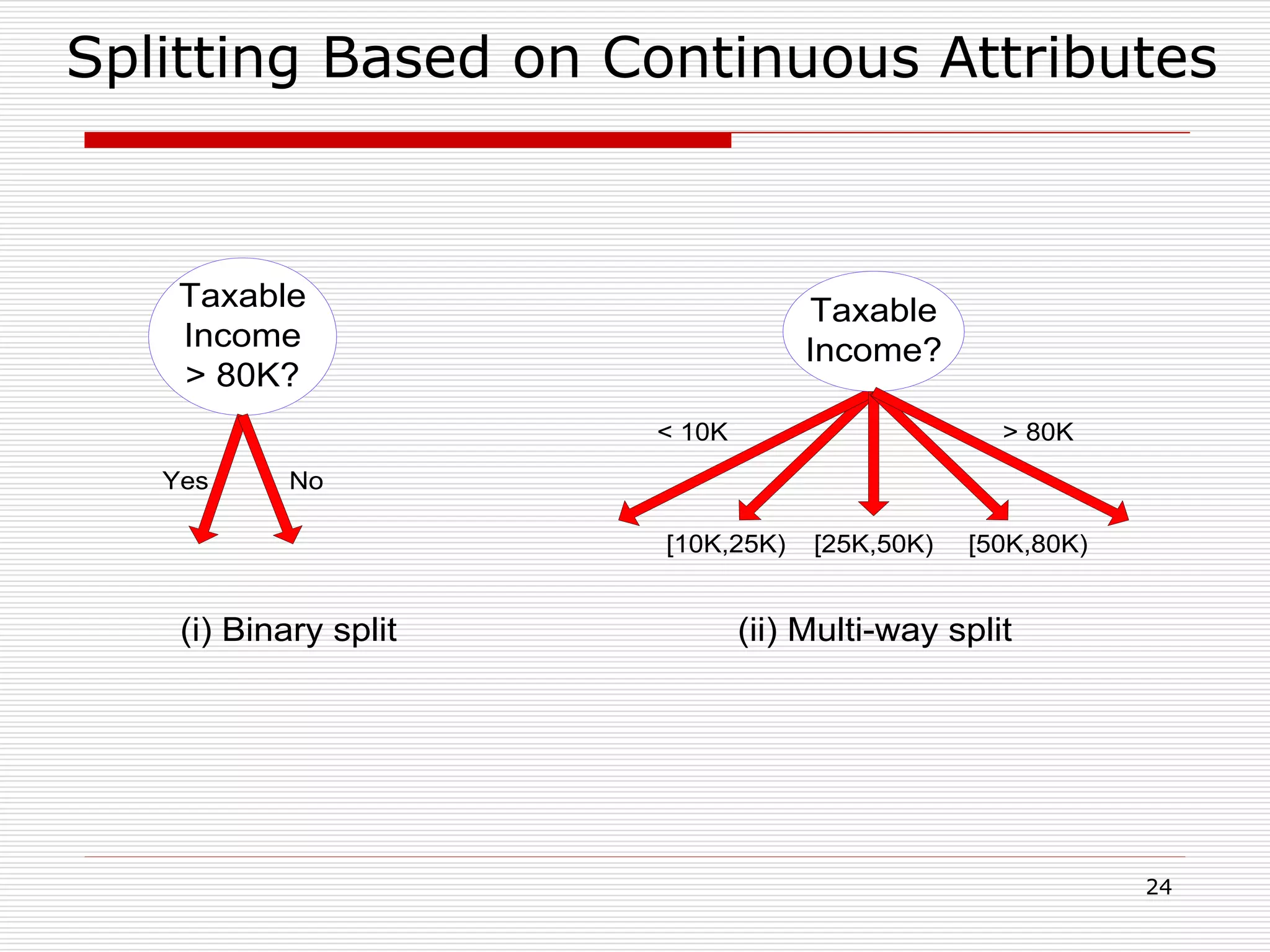

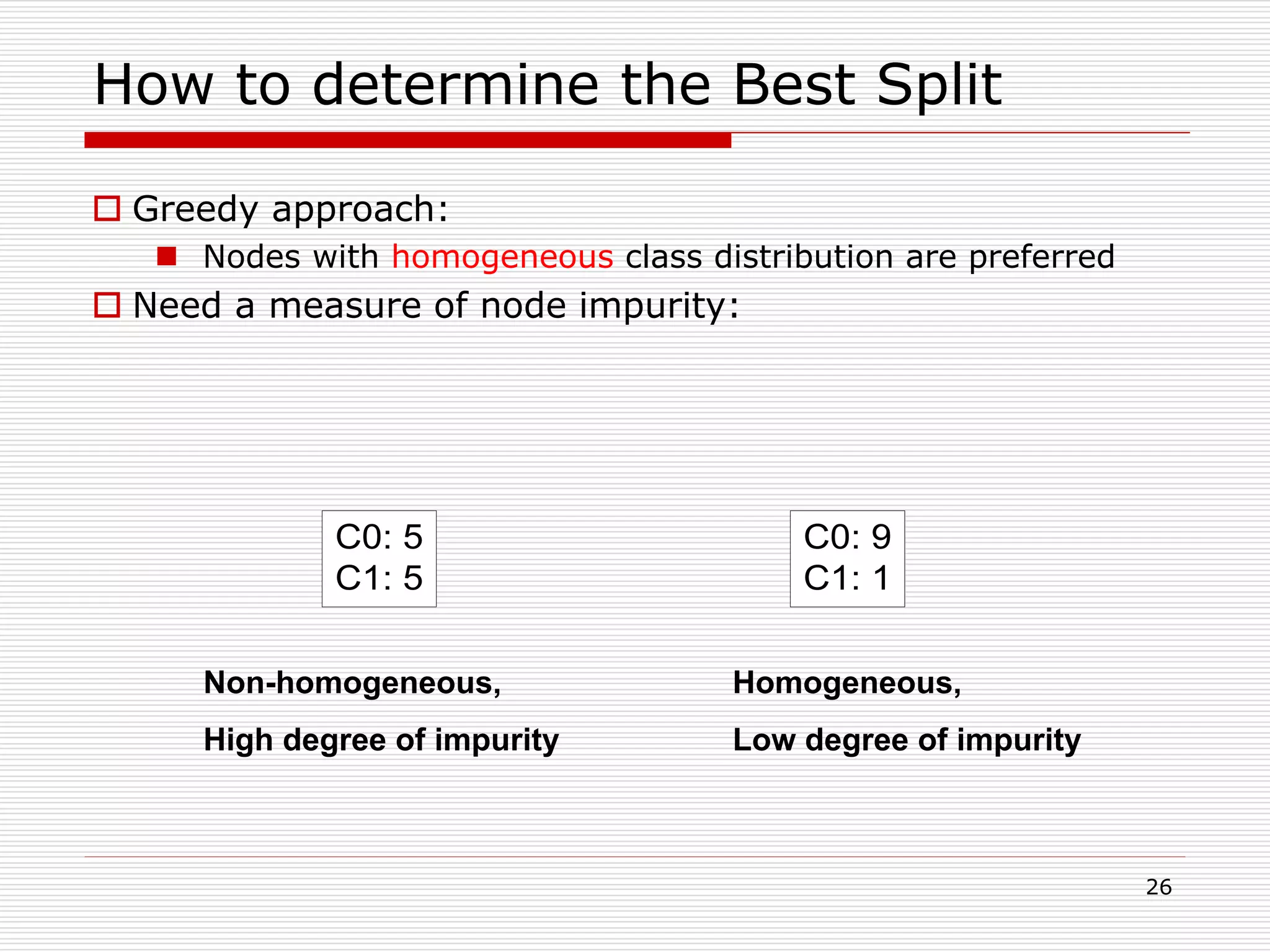
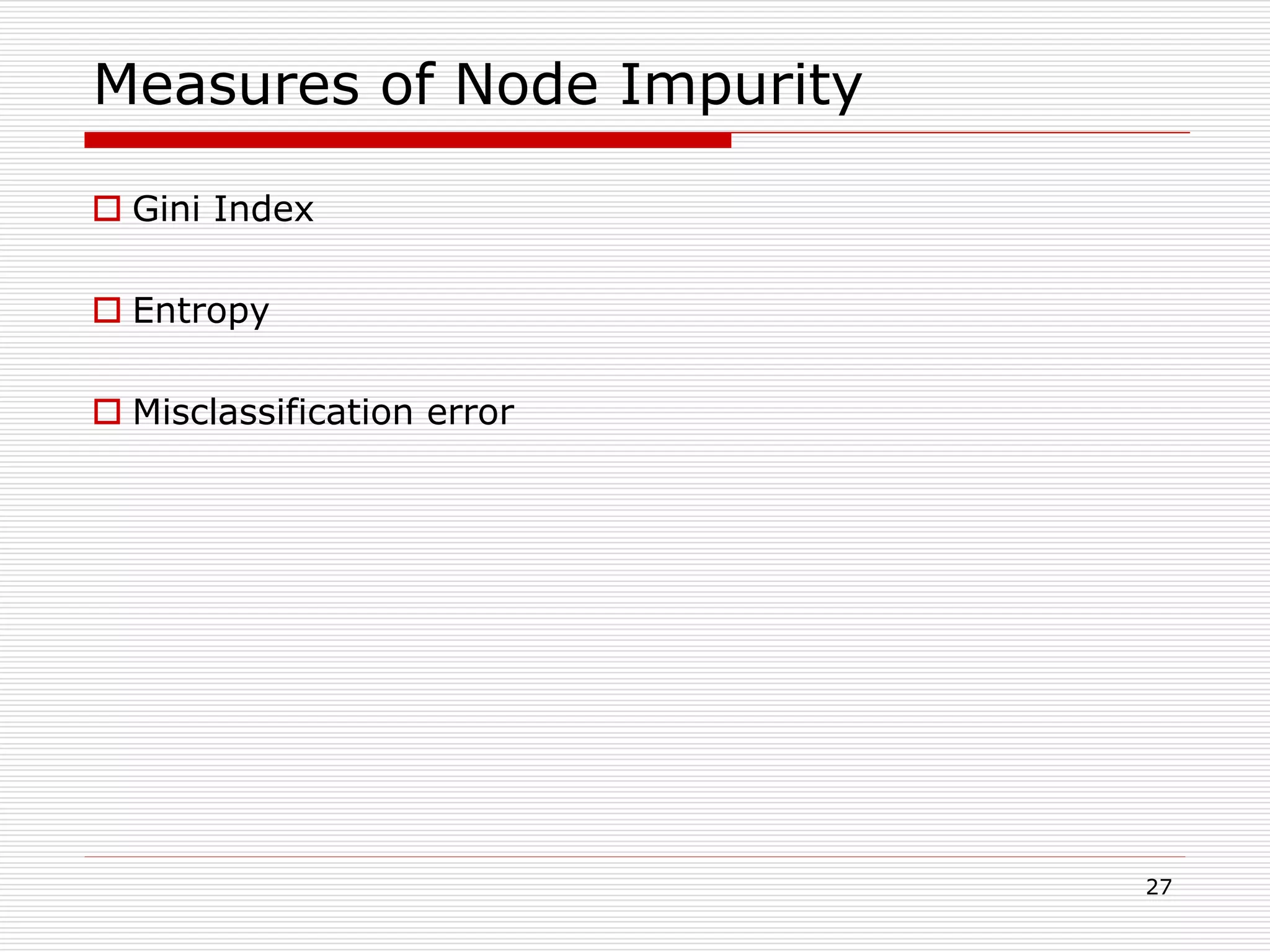
![28
Measure of Impurity: GINI
Gini Index for a given node t :
(NOTE: p( j | t) is the relative frequency of class j at node t).
Maximum (1 - 1/nc) when records are equally distributed among all
classes, implying least interesting information
Minimum (0.0) when all records belong to one class, implying most
interesting information
j
tjptGINI 2
)]|([1)(
C1 0
C2 6
Gini=0.000
C1 2
C2 4
Gini=0.444
C1 3
C2 3
Gini=0.500
C1 1
C2 5
Gini=0.278](https://image.slidesharecdn.com/classification-200330143708/75/Classification-28-2048.jpg)
![29
Examples for computing GINI
C1 0
C2 6
C1 2
C2 4
C1 1
C2 5
P(C1) = 0/6 = 0 P(C2) = 6/6 = 1
Gini = 1 – P(C1)2 – P(C2)2 = 1 – 0 – 1 = 0
j
tjptGINI 2
)]|([1)(
P(C1) = 1/6 P(C2) = 5/6
Gini = 1 – (1/6)2 – (5/6)2 = 0.278
P(C1) = 2/6 P(C2) = 4/6
Gini = 1 – (2/6)2 – (4/6)2 = 0.444](https://image.slidesharecdn.com/classification-200330143708/75/Classification-29-2048.jpg)
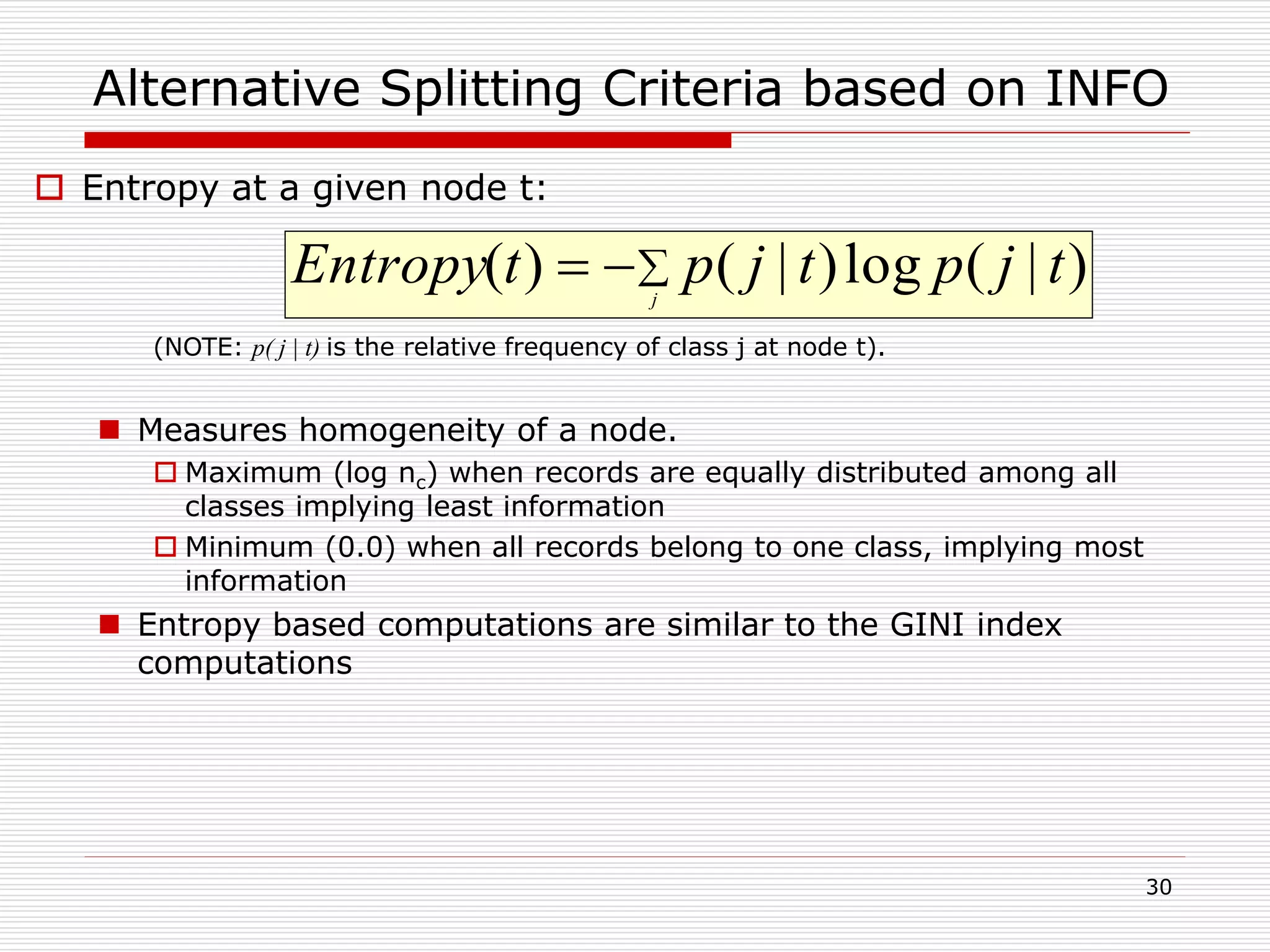
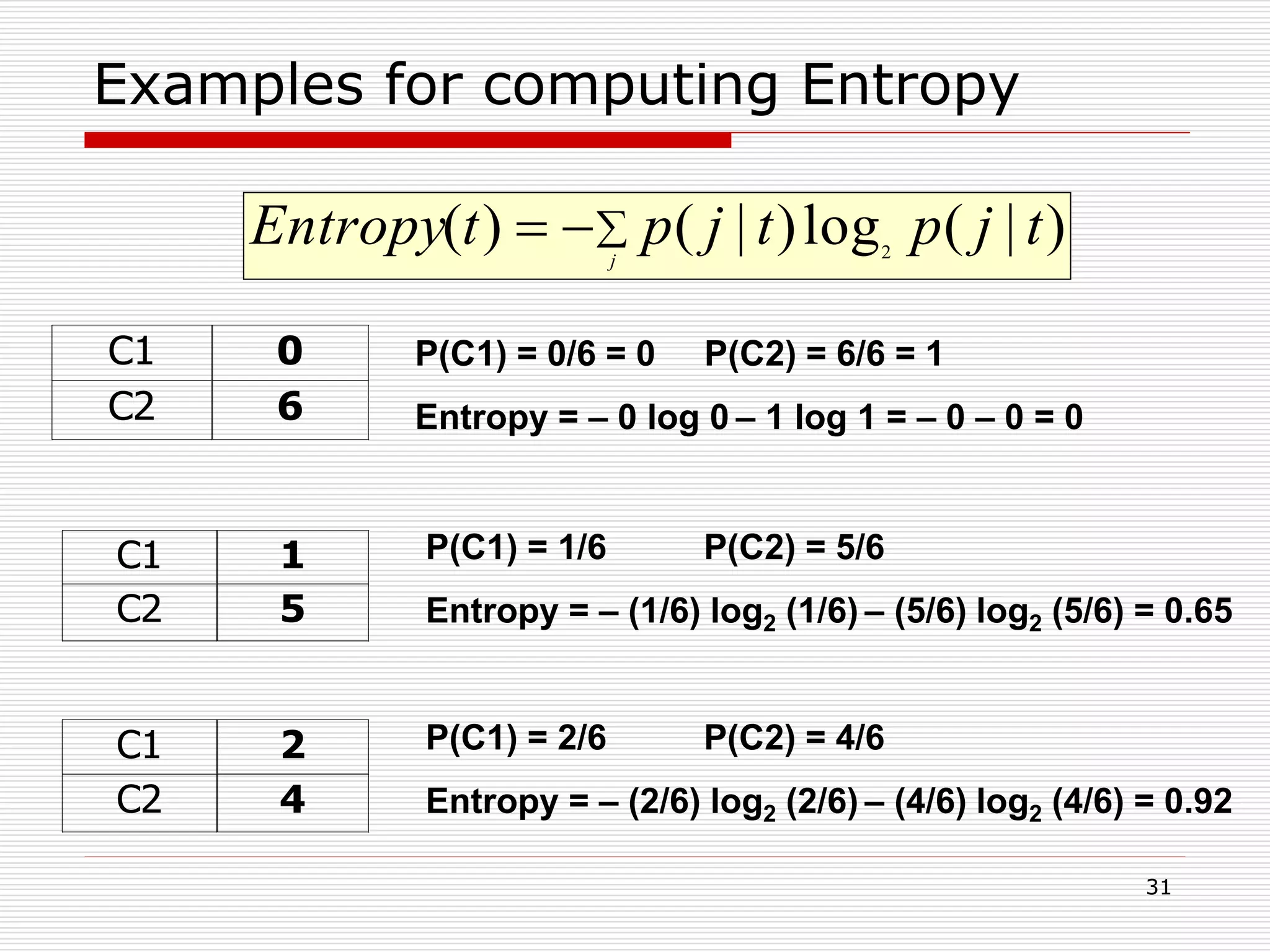
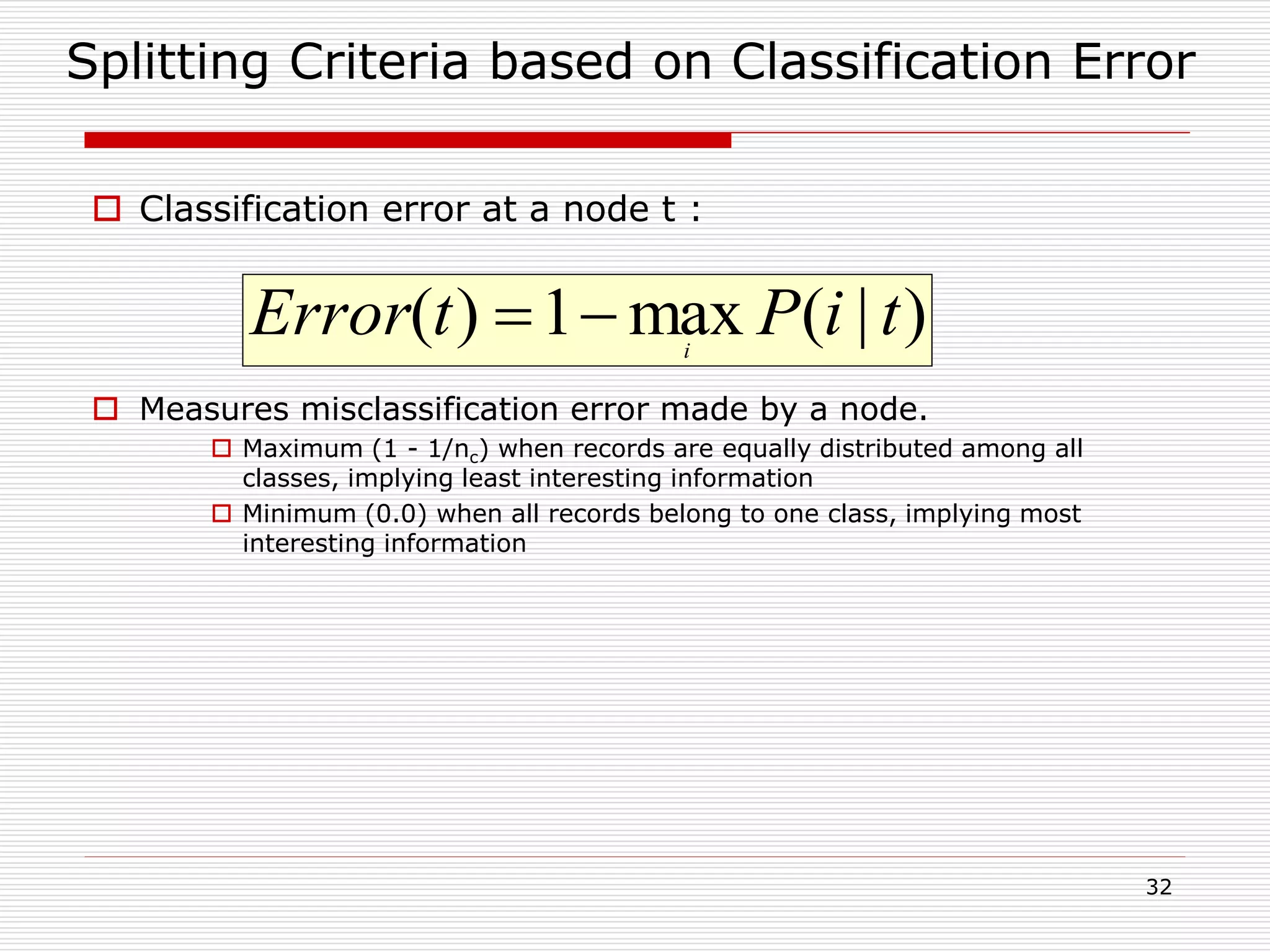
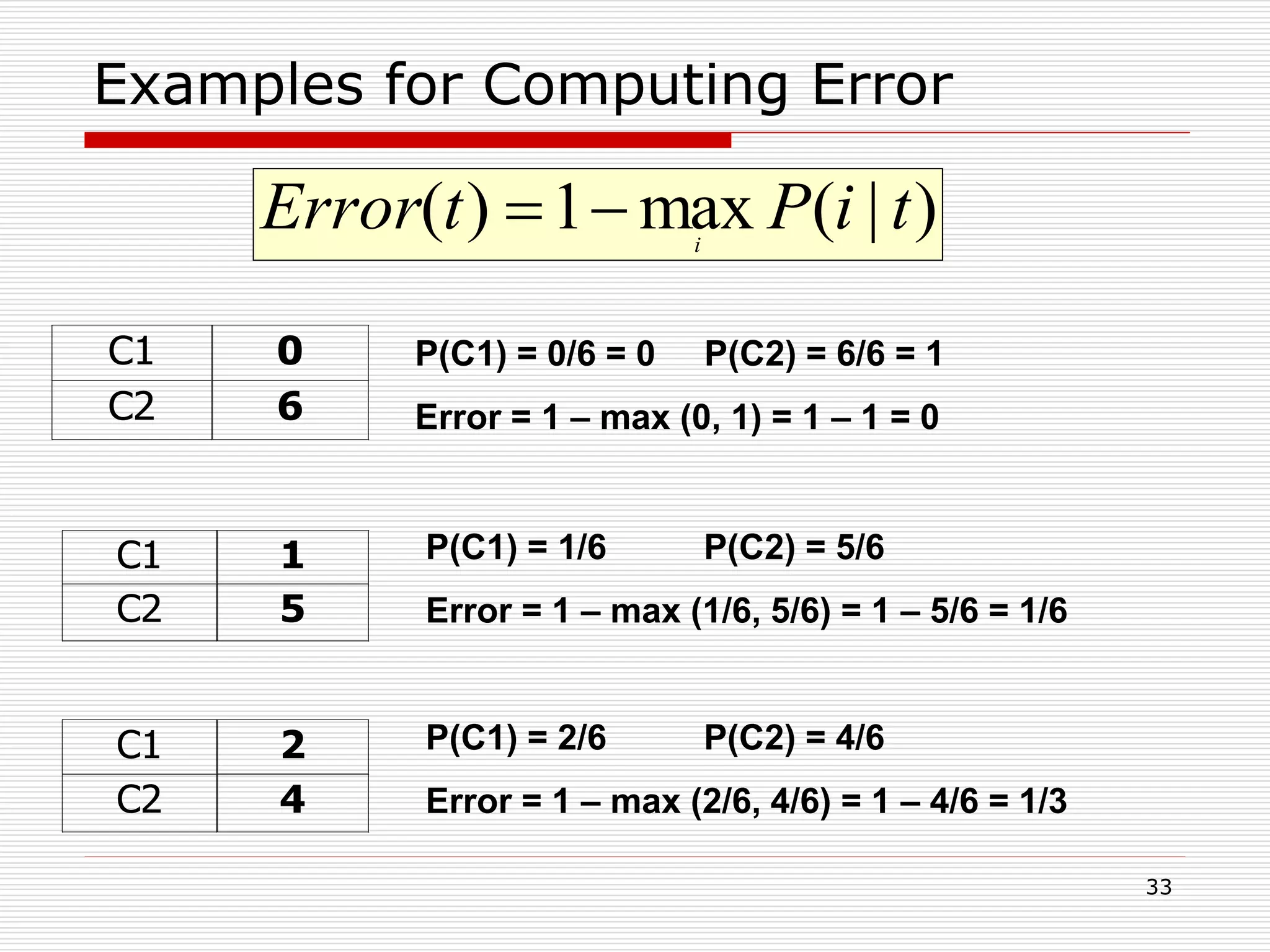
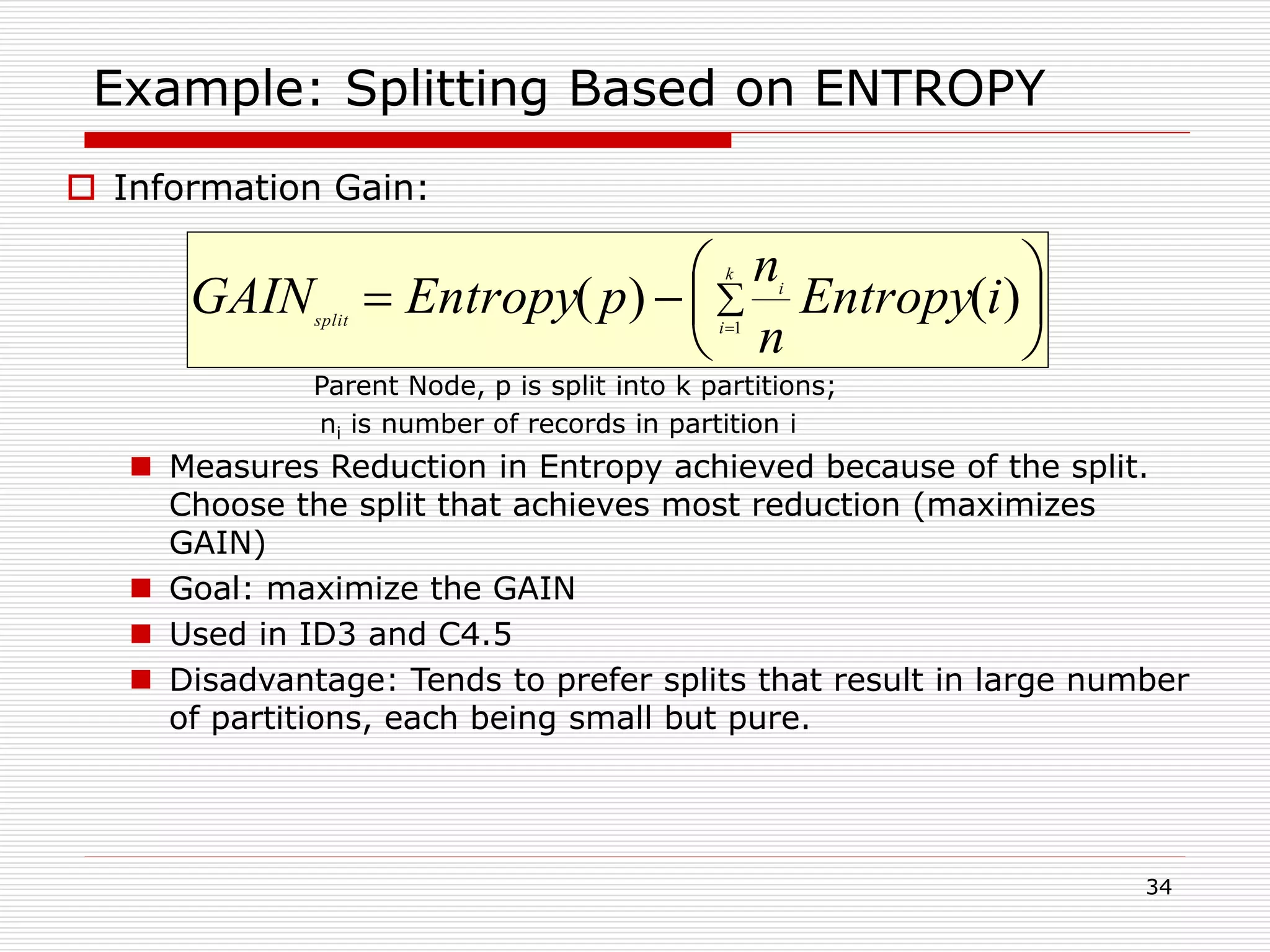
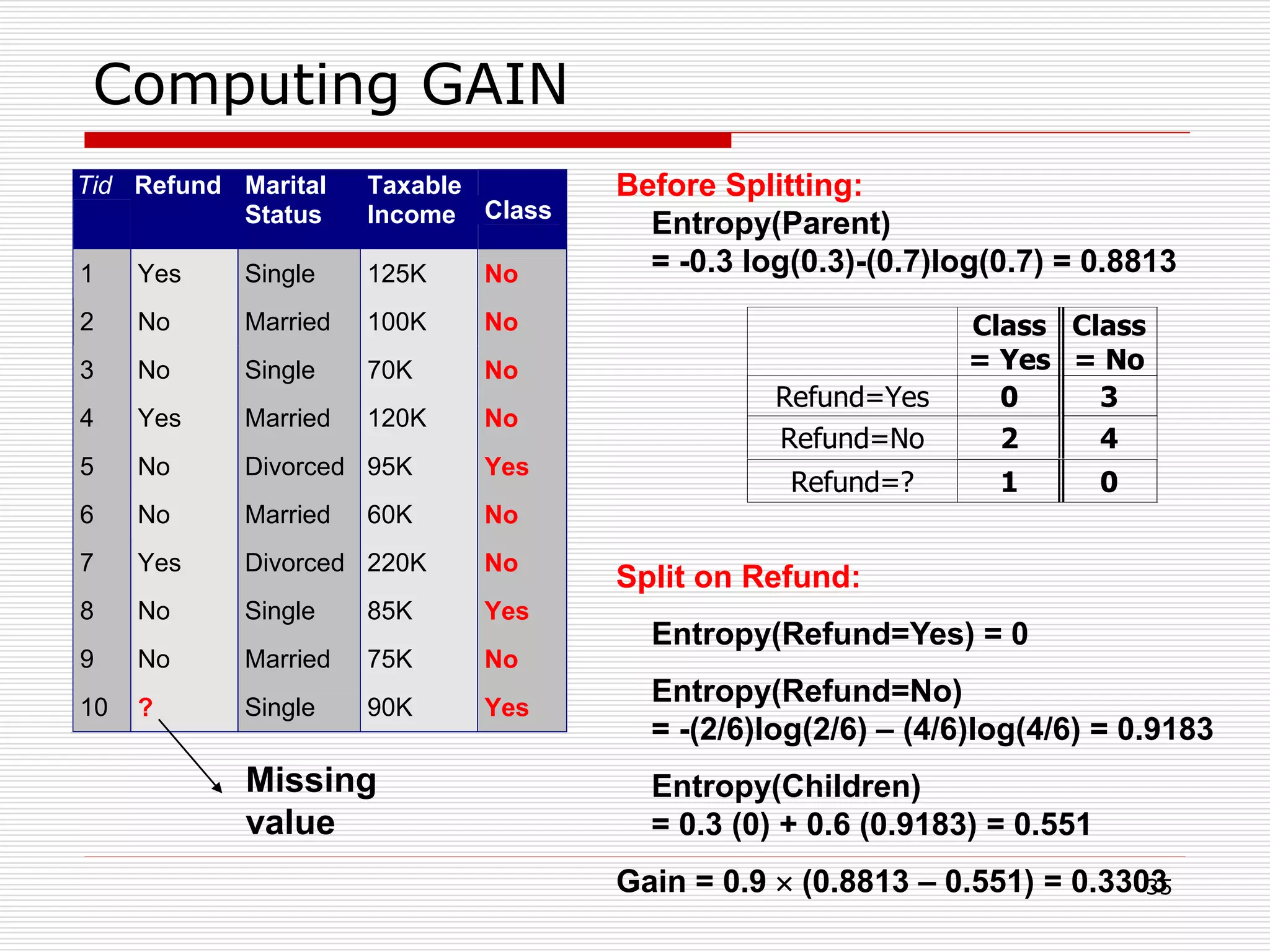
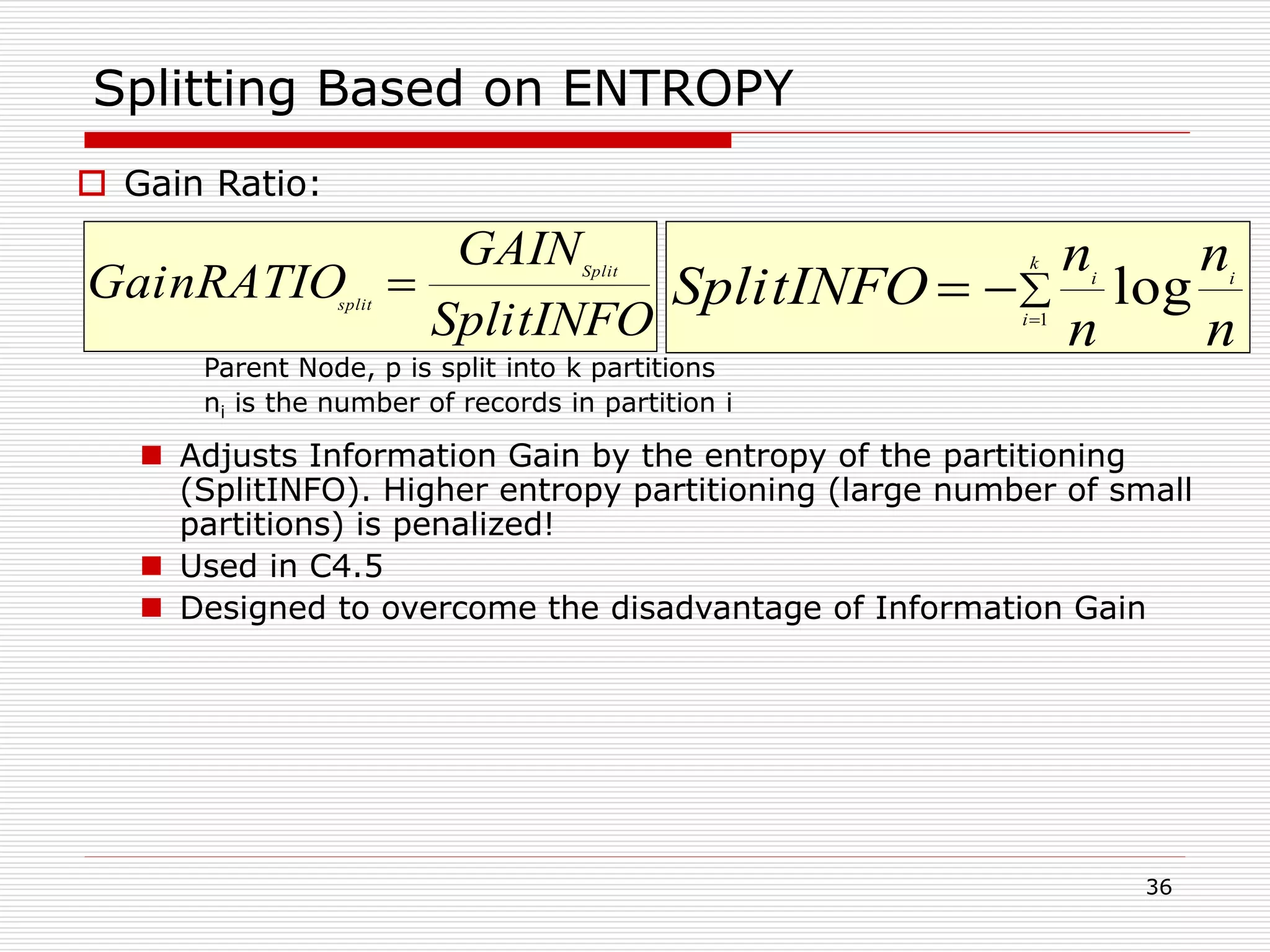
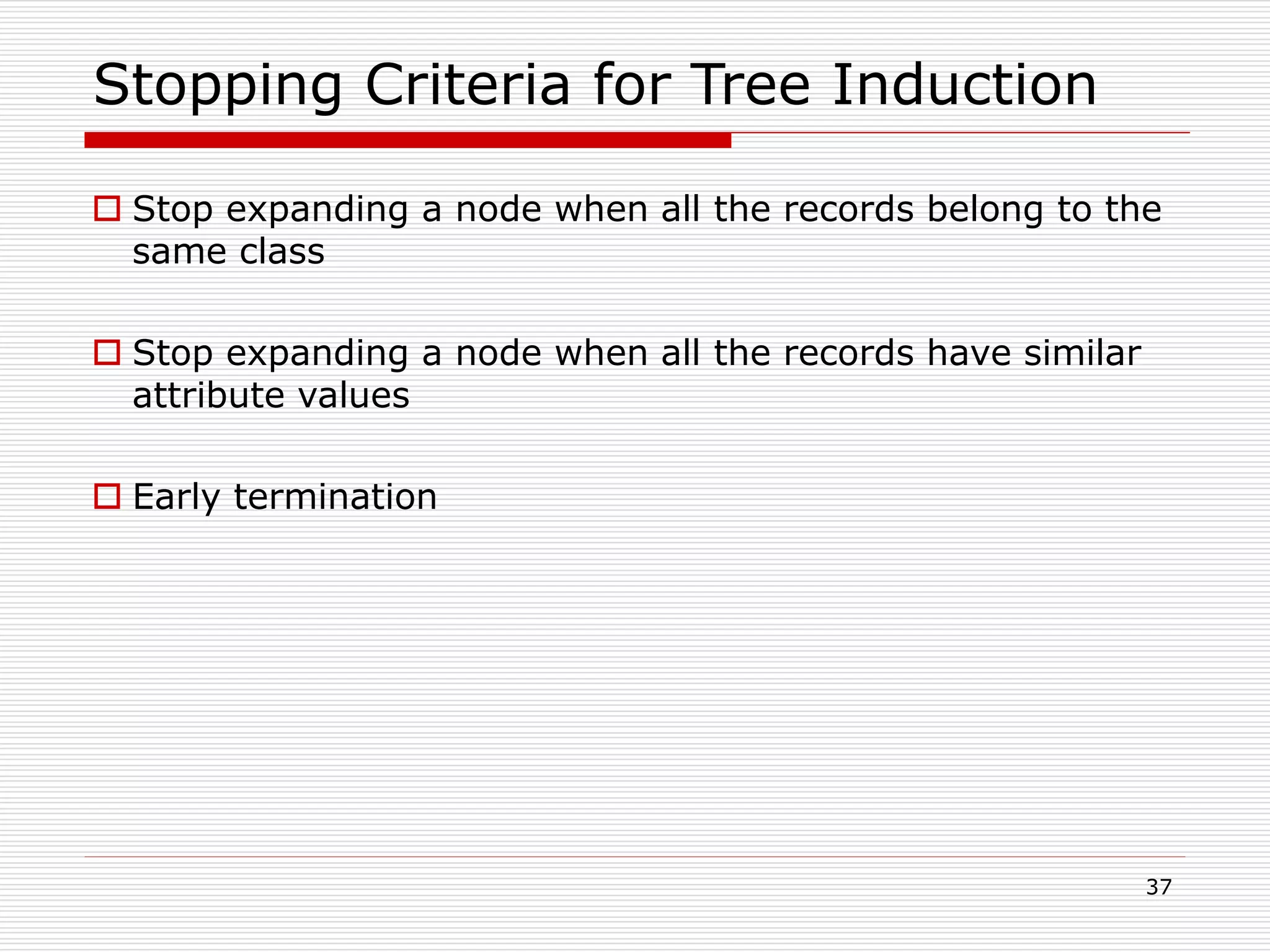
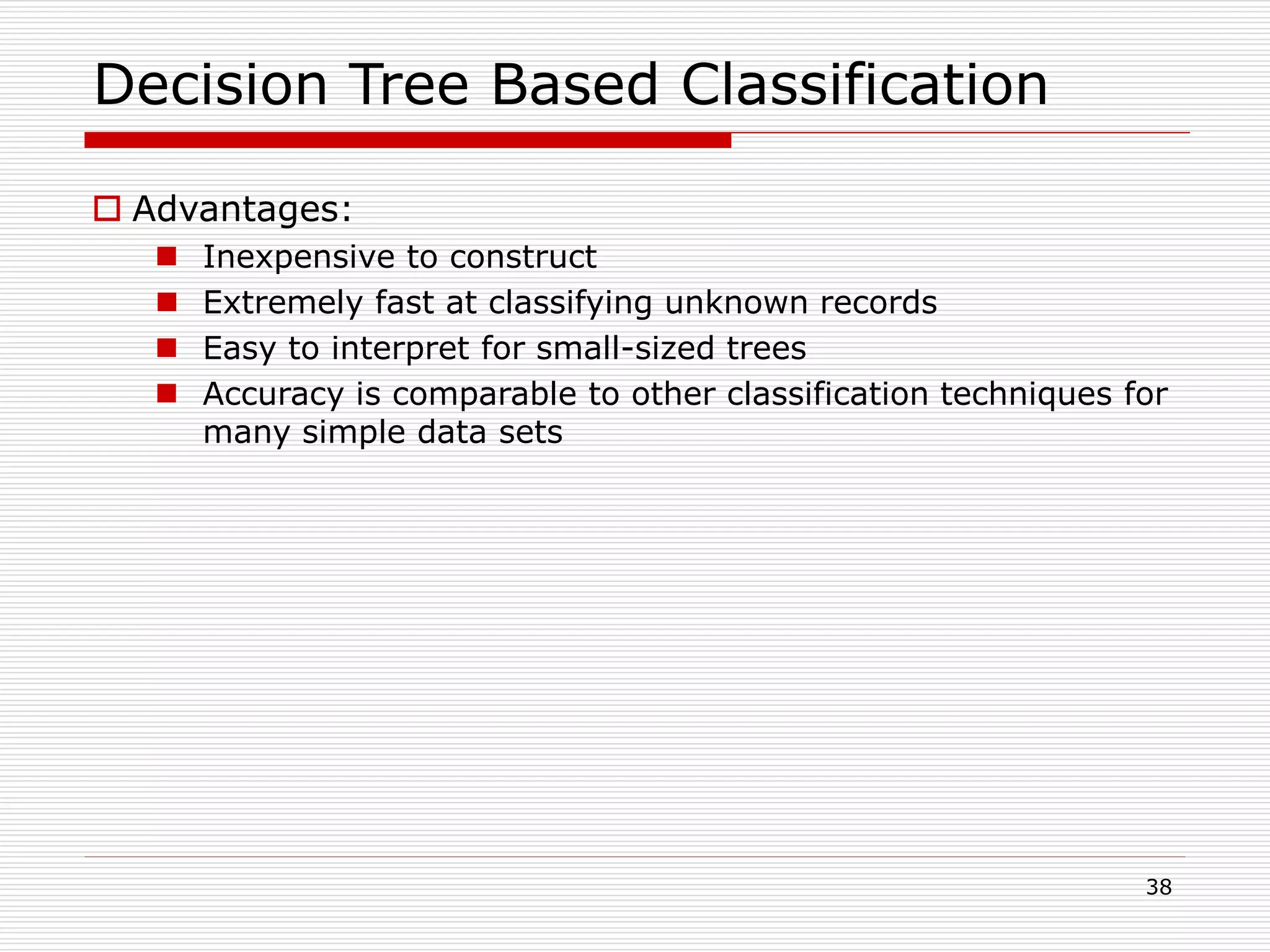
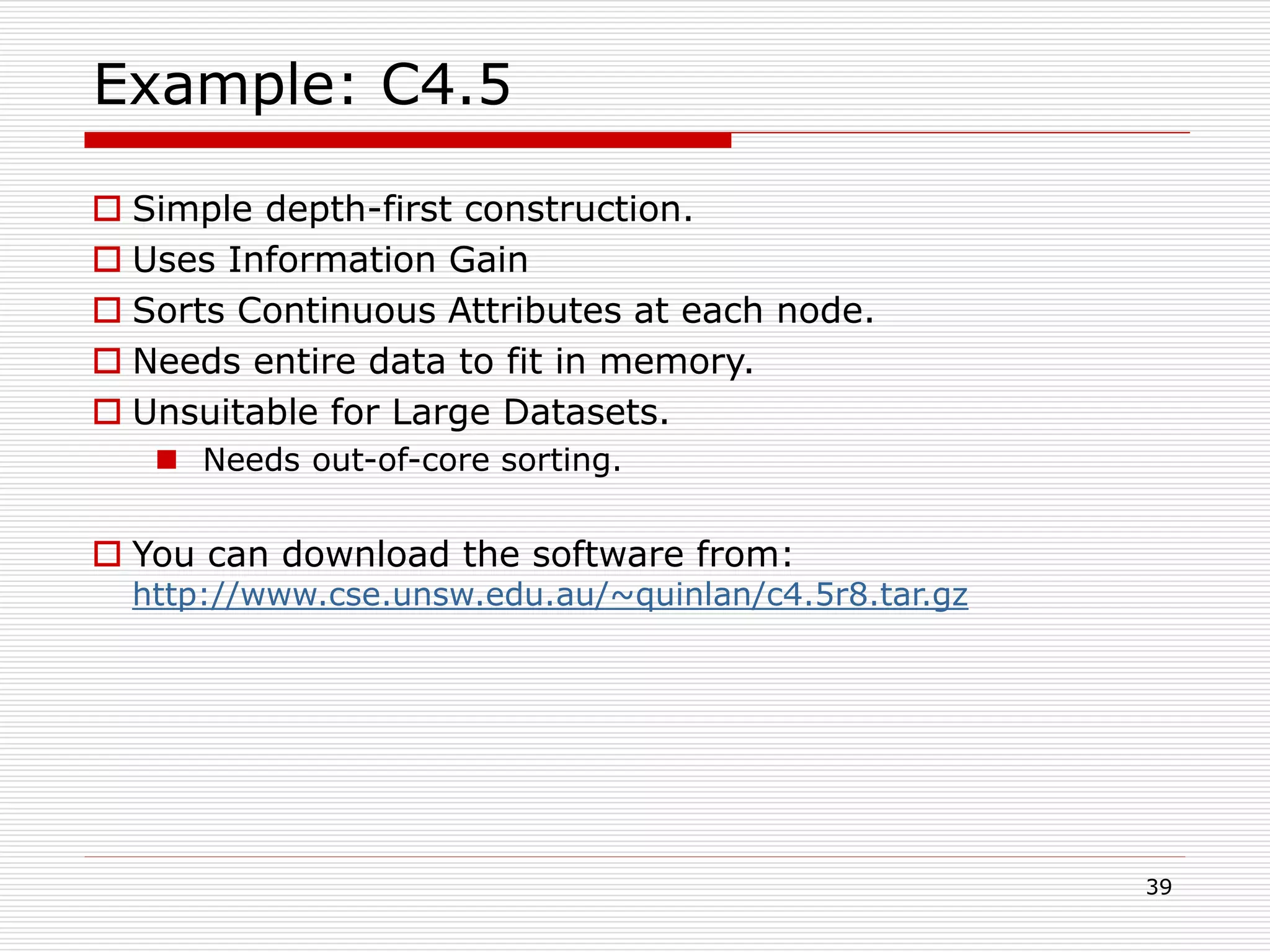


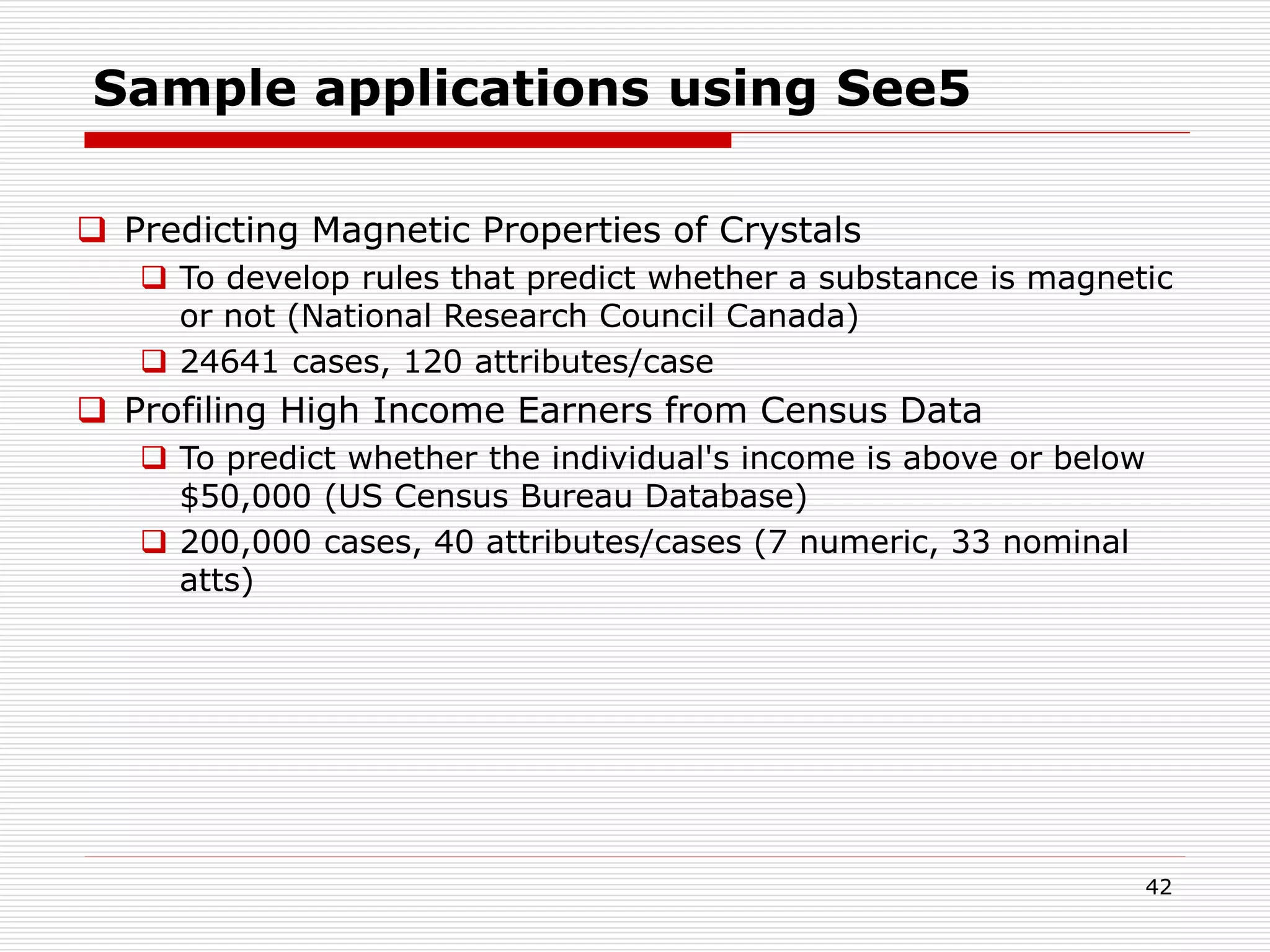


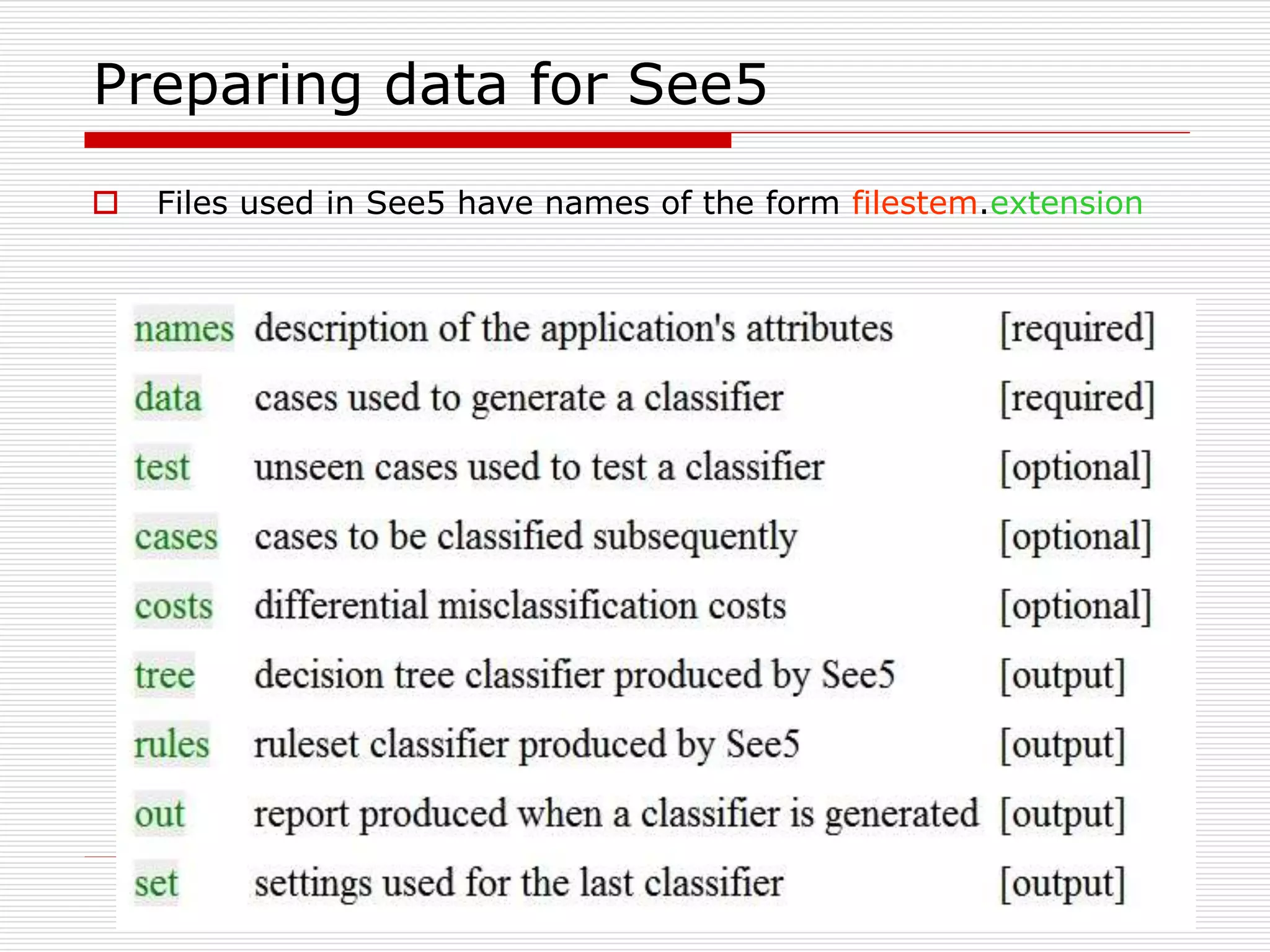

![47
Preparing data for See5
Types of attributes
Continuous: numeric values
Date: dates in the form YYYY/MM/DD or YYYY-MM-DD
Time: times in the form HH:MM:SS
Timestamp: times in the form YYYY/MM/DD HH:MM:SS
Discrete N: discrete, unordered values. N is the maximum
values
A comma-separated list of names: discrete values
[ordered] can be used to indicate that the ordering
Example: grade: [ordered] low, medium, high.
Label
Ignore](https://image.slidesharecdn.com/classification-200330143708/75/Classification-47-2048.jpg)
